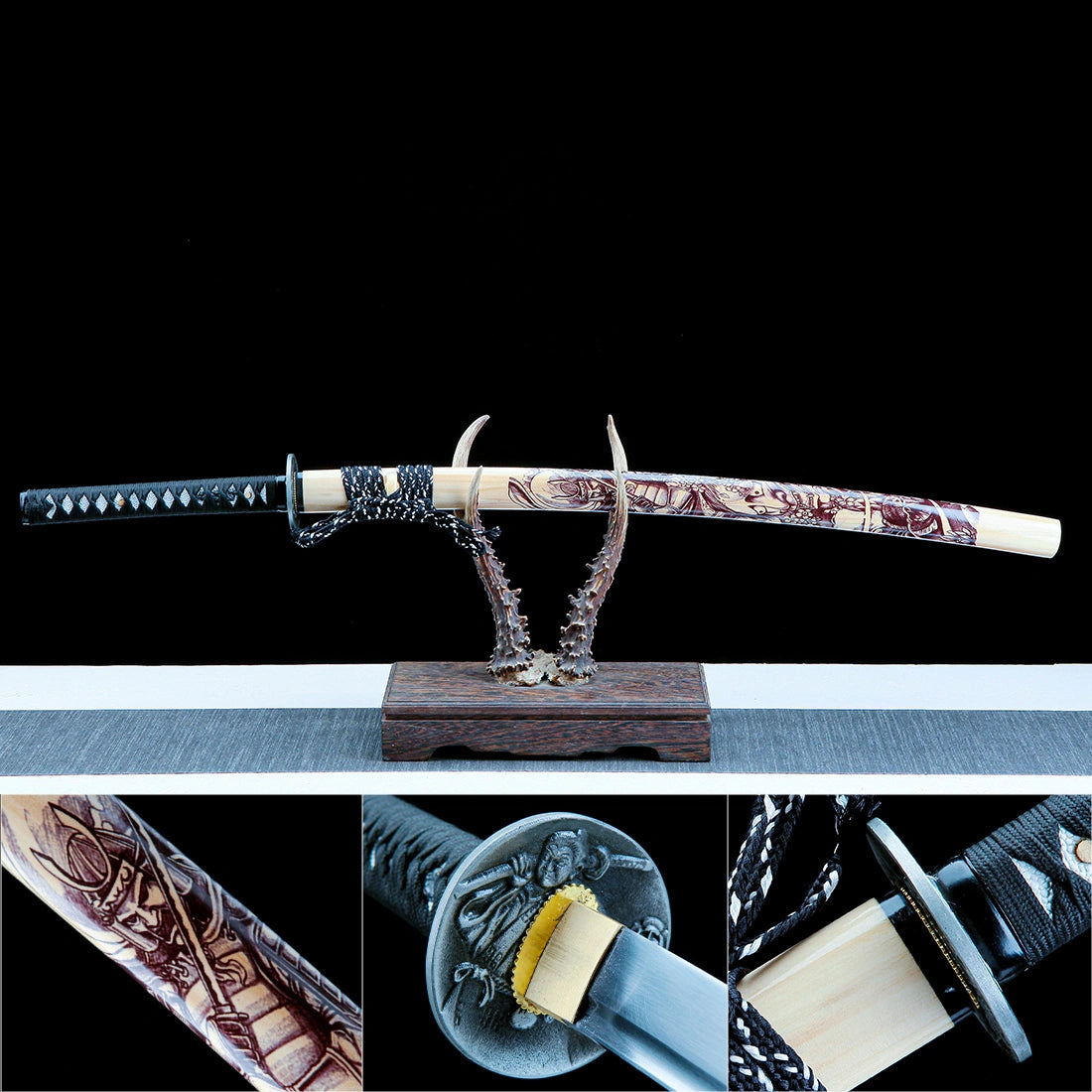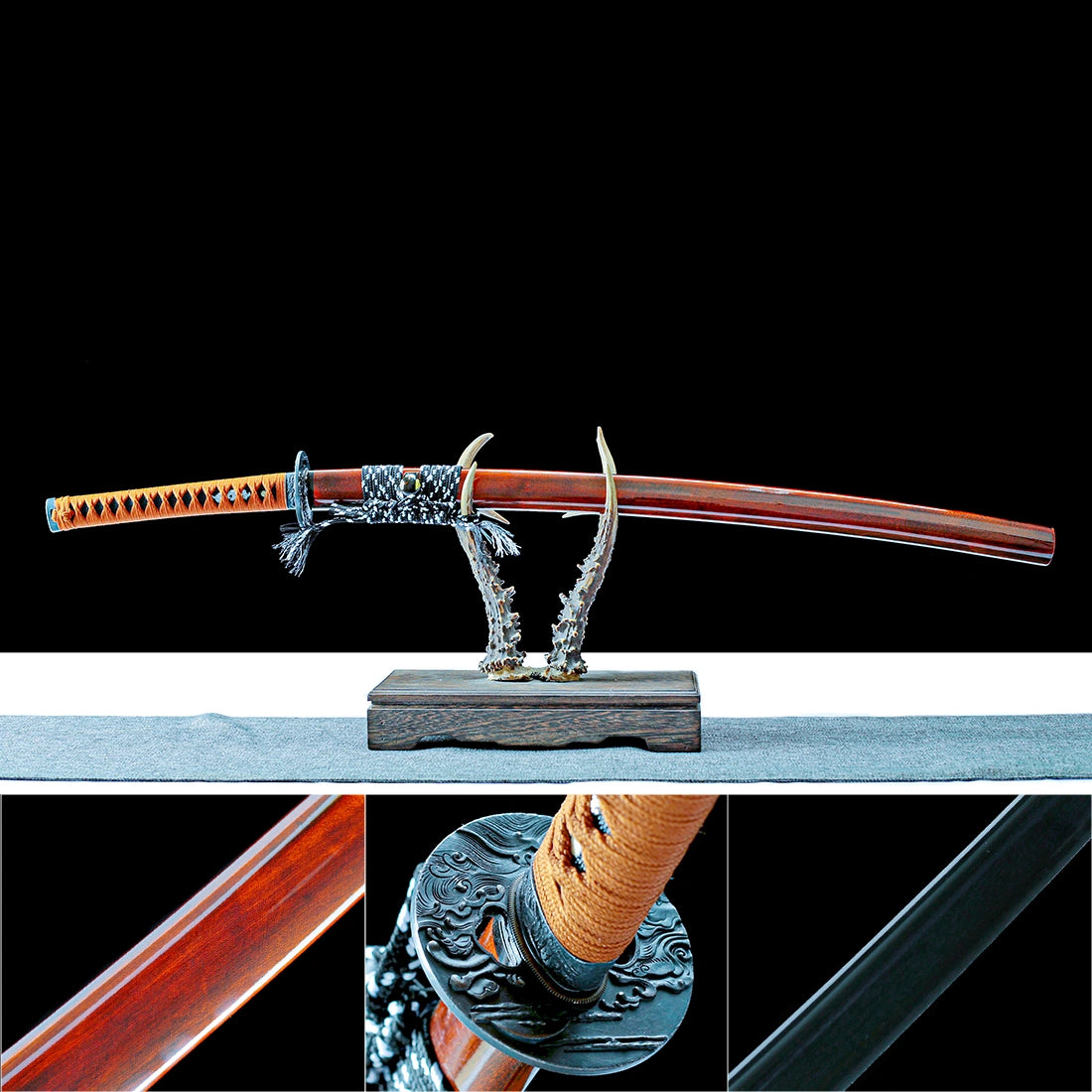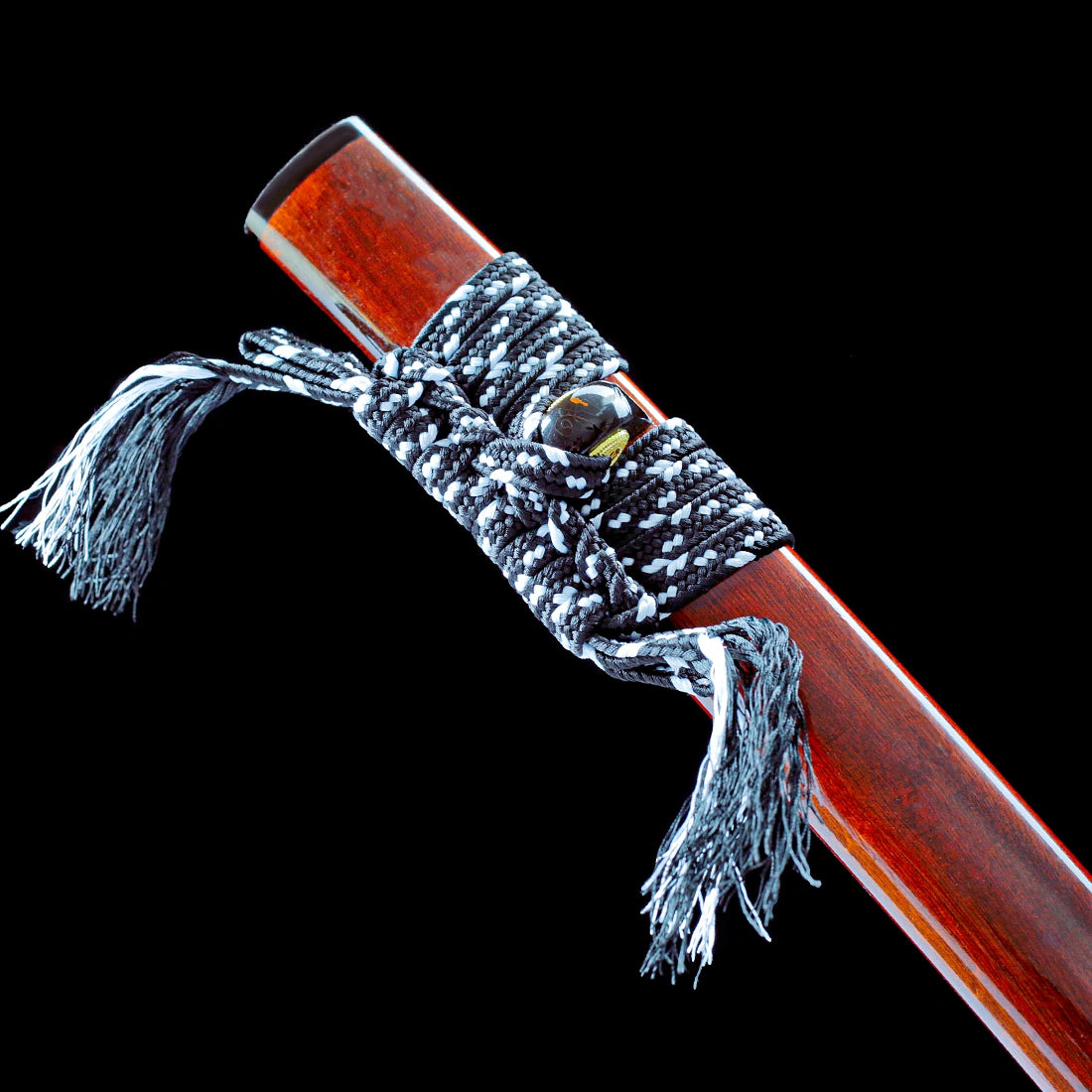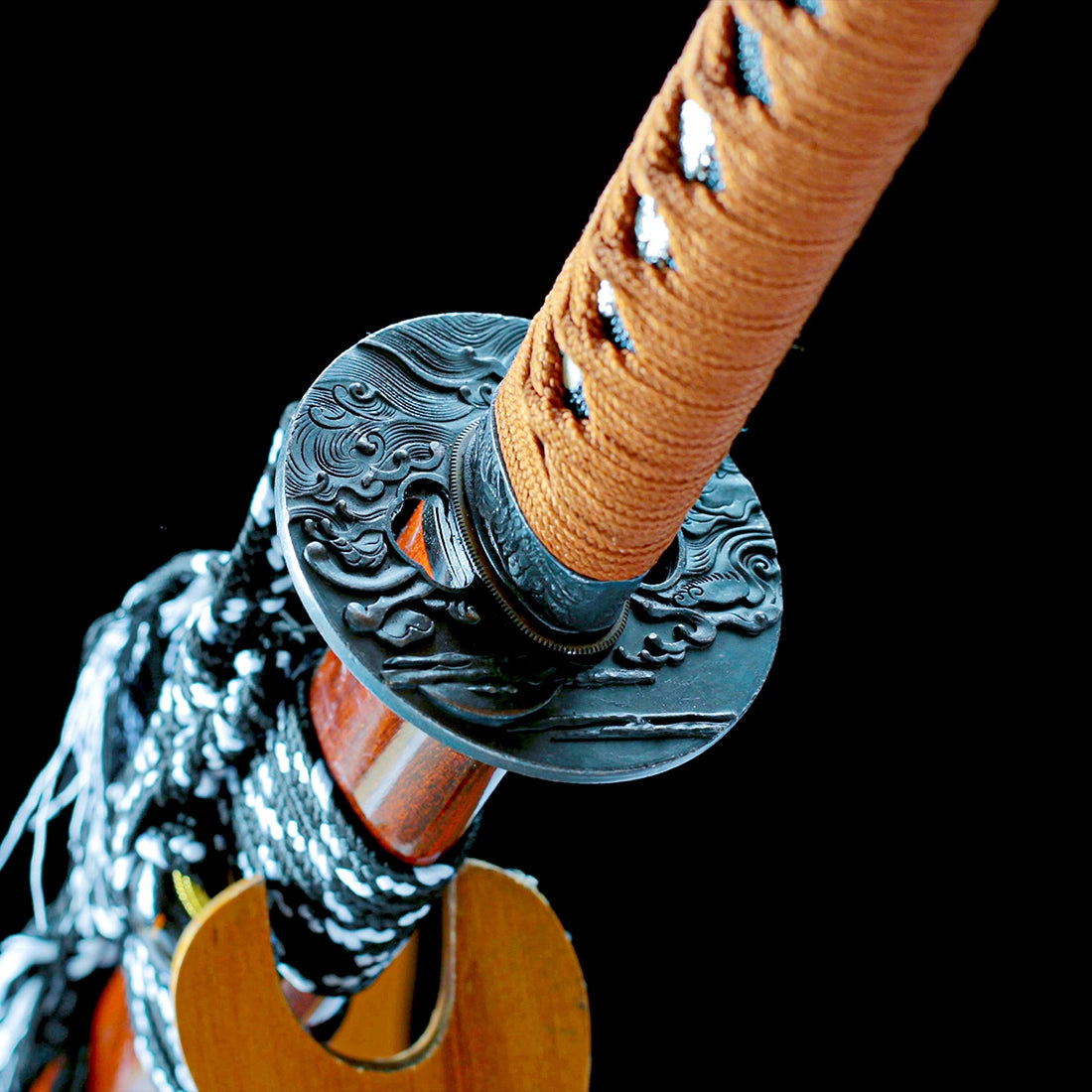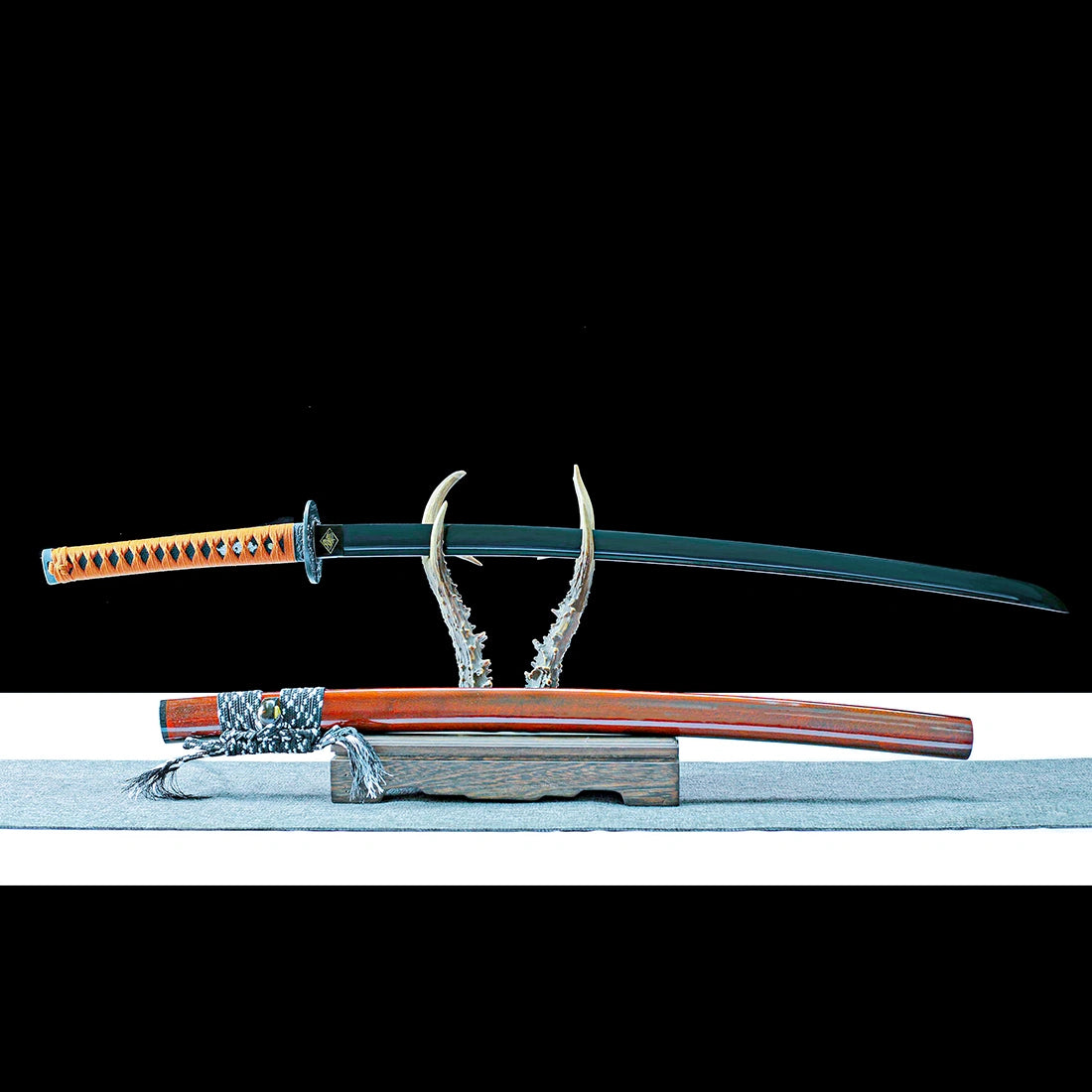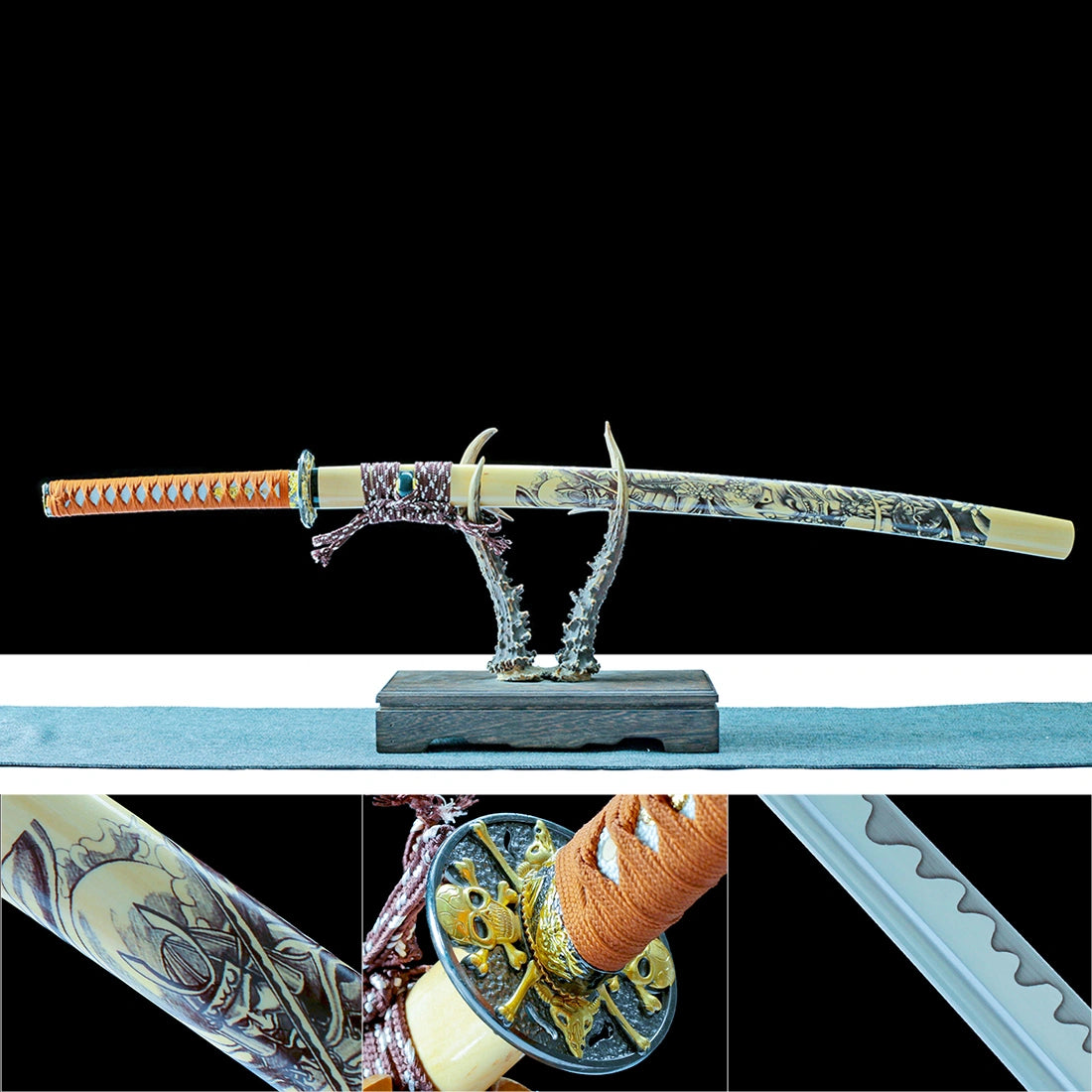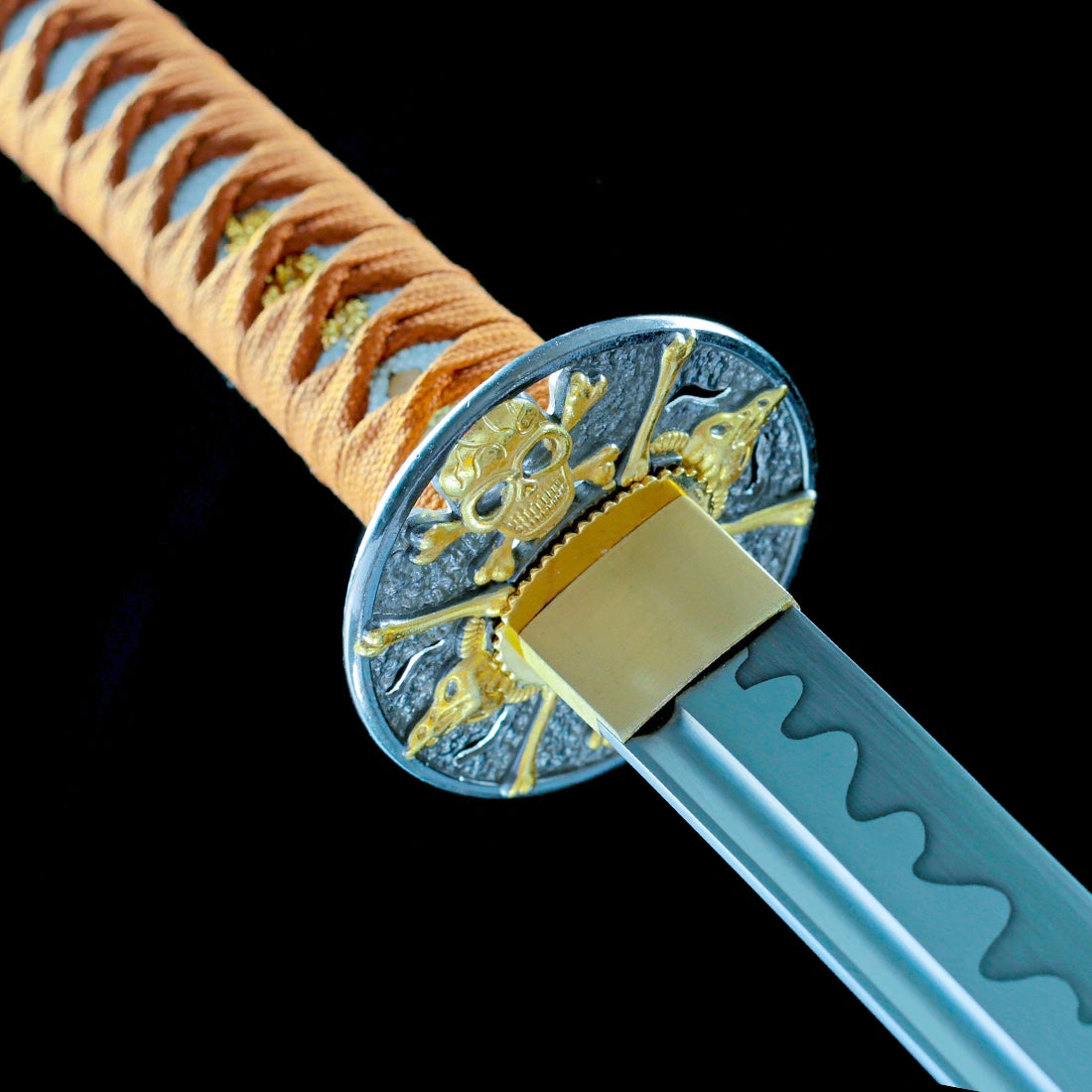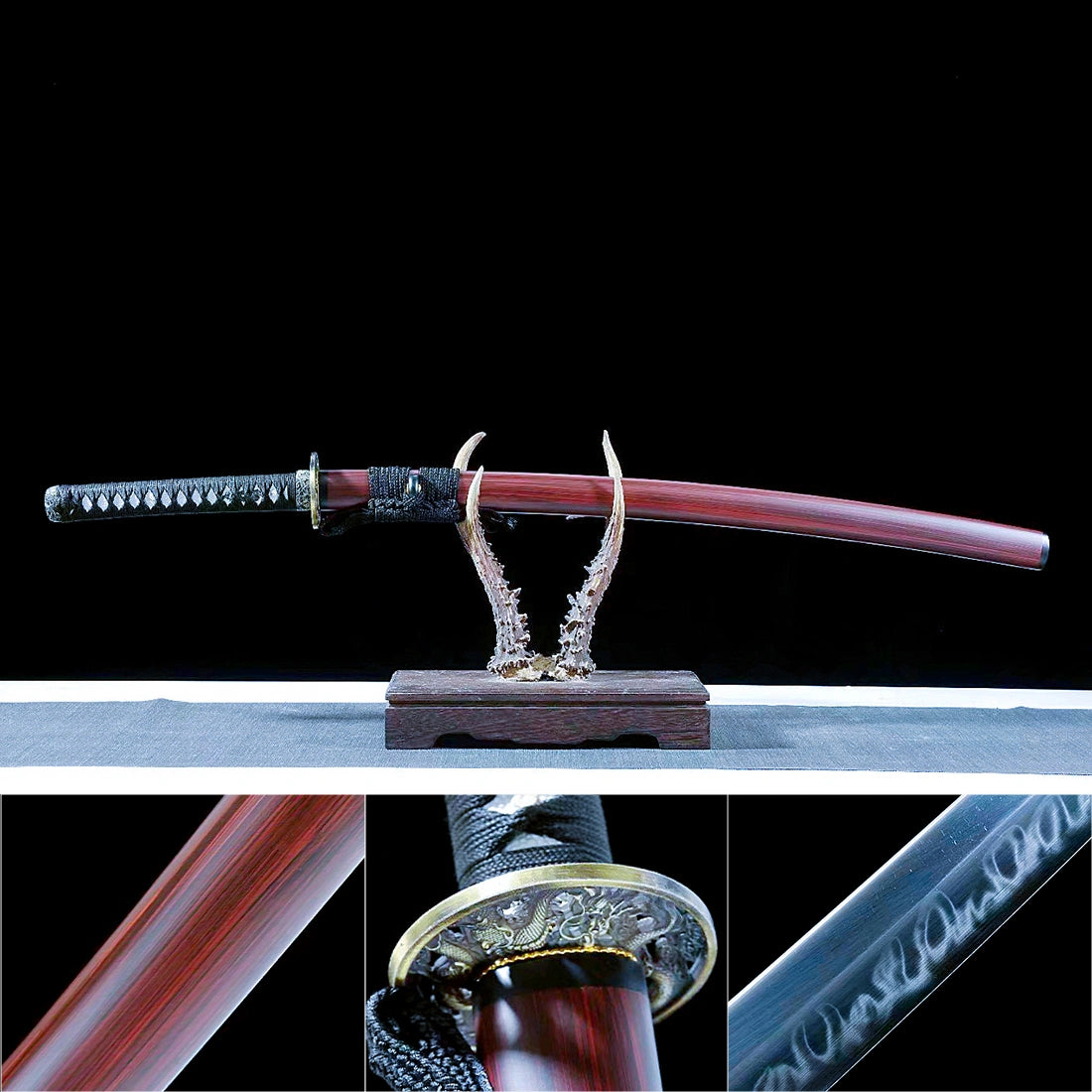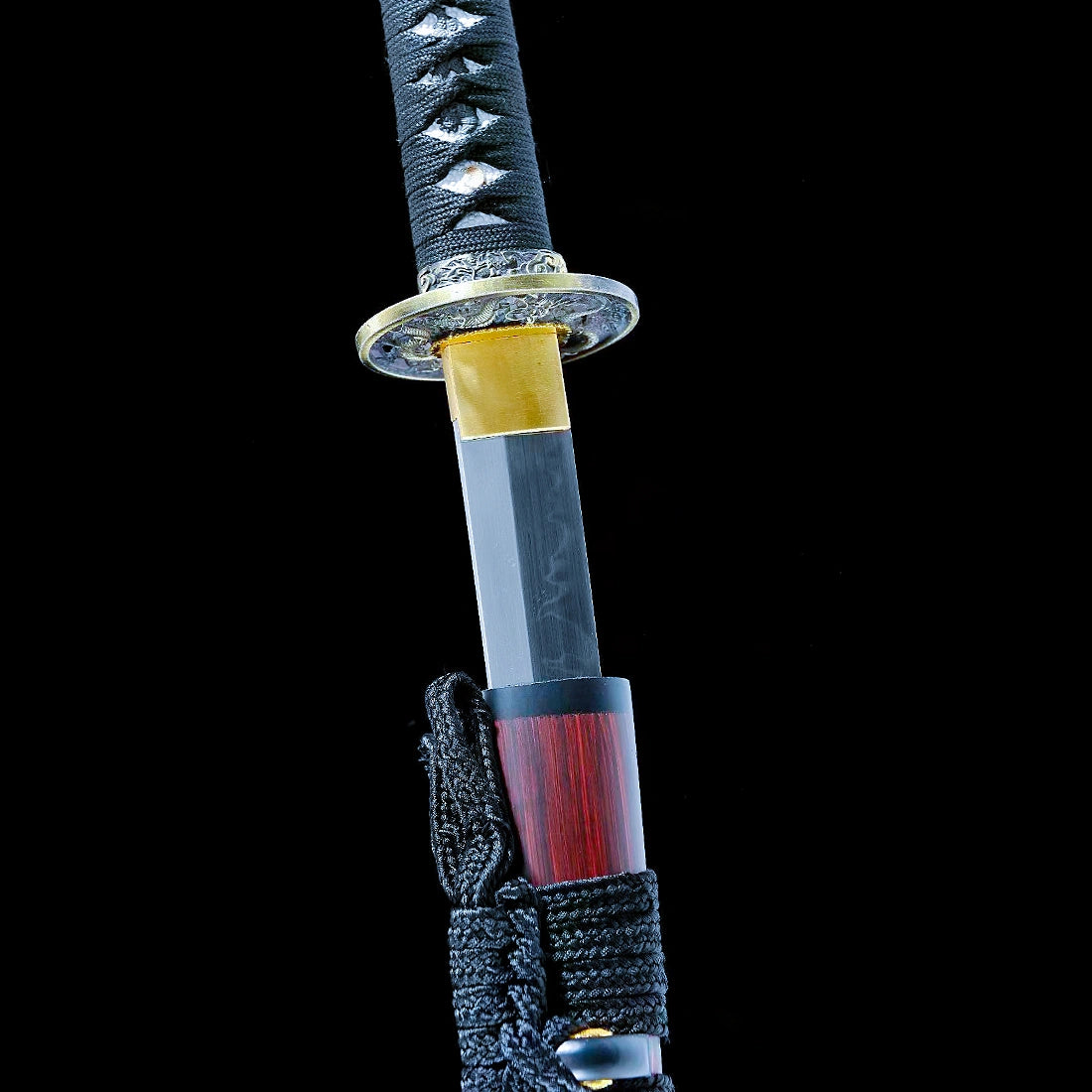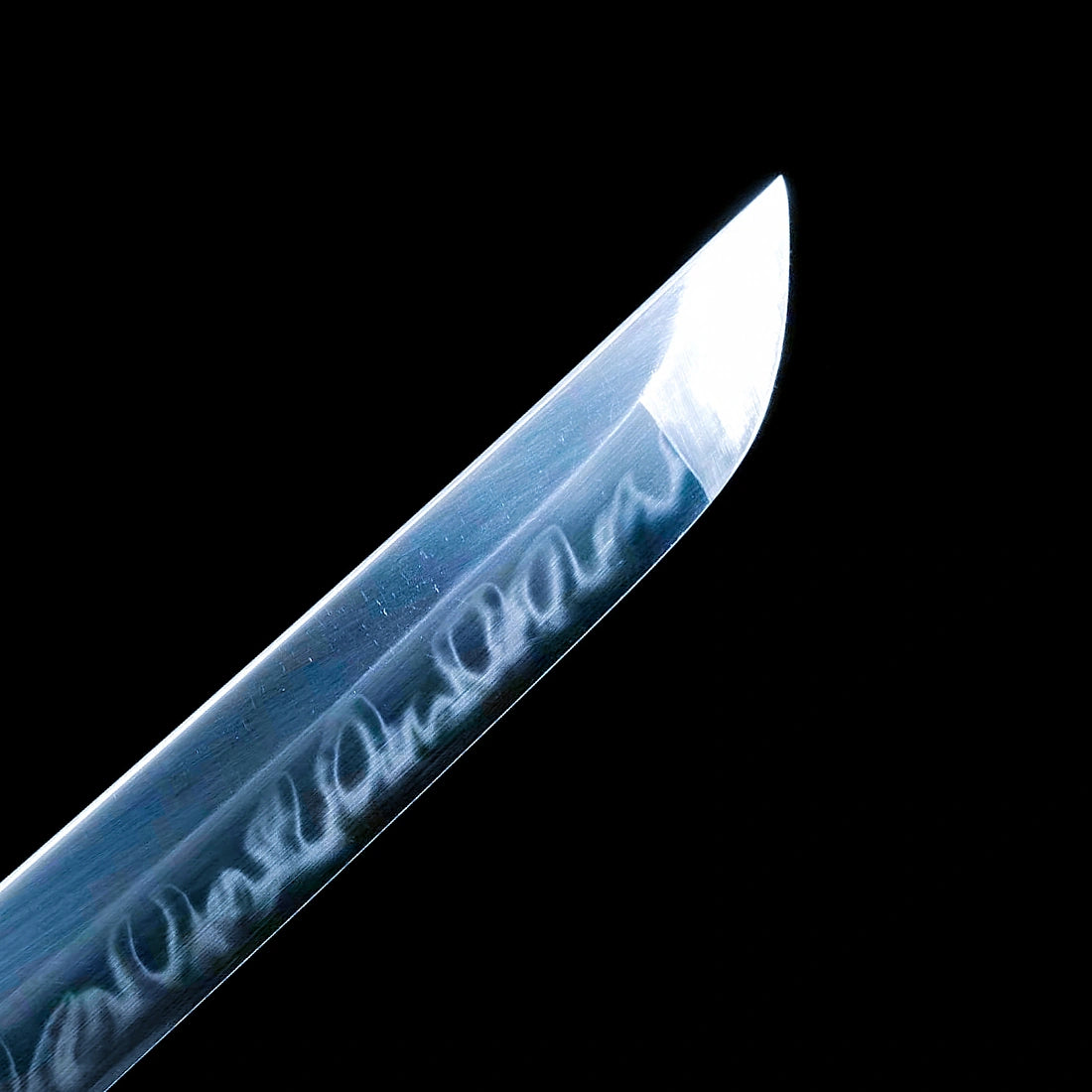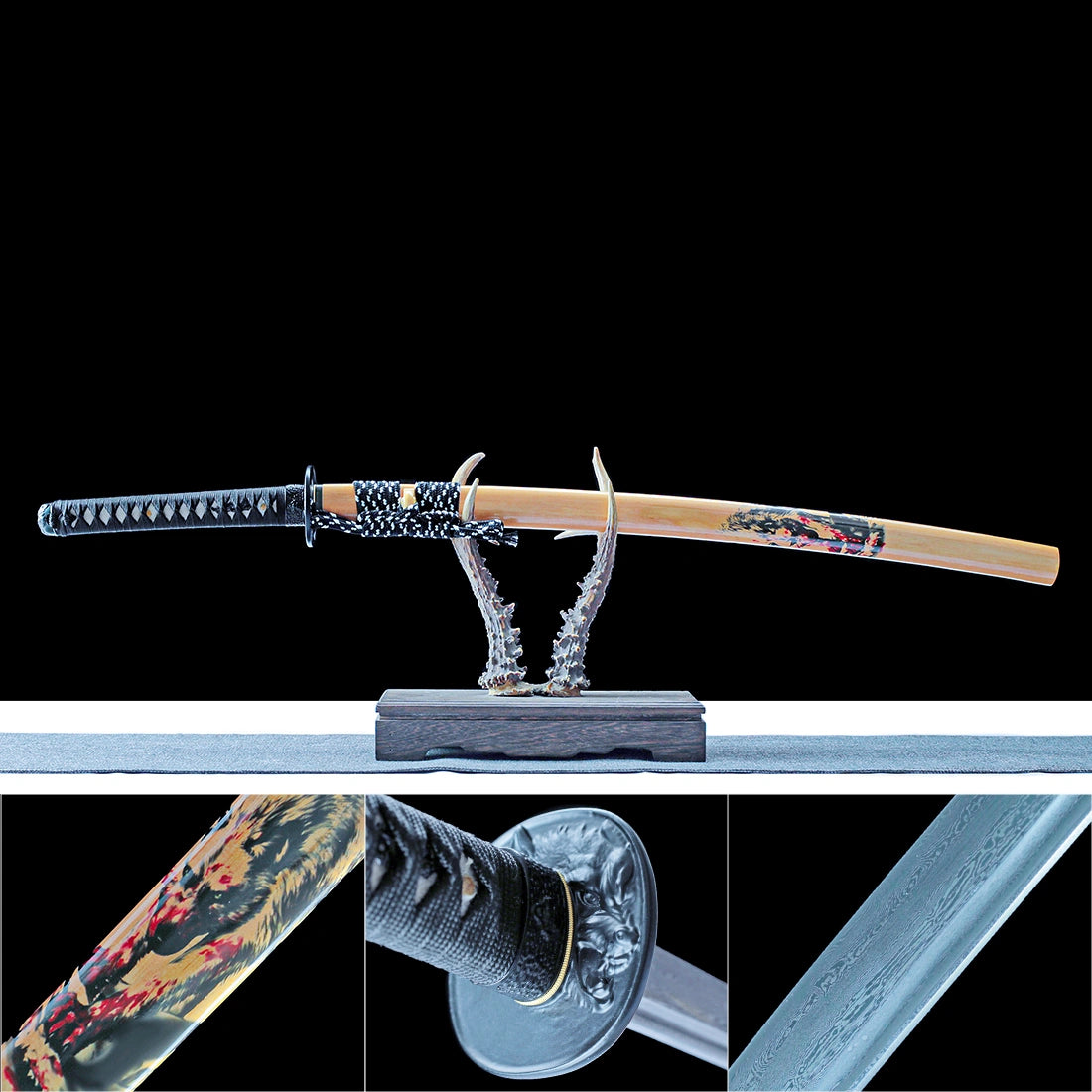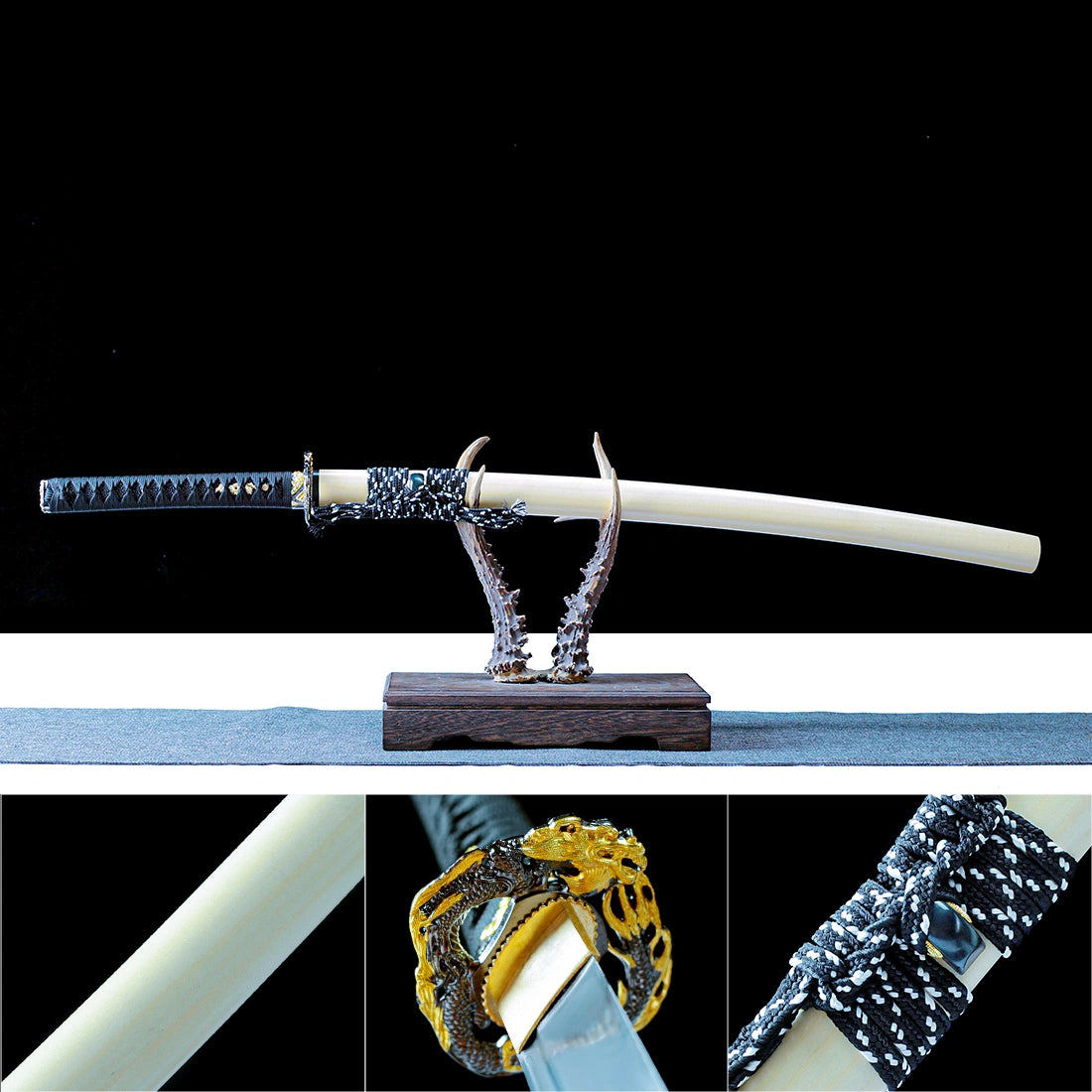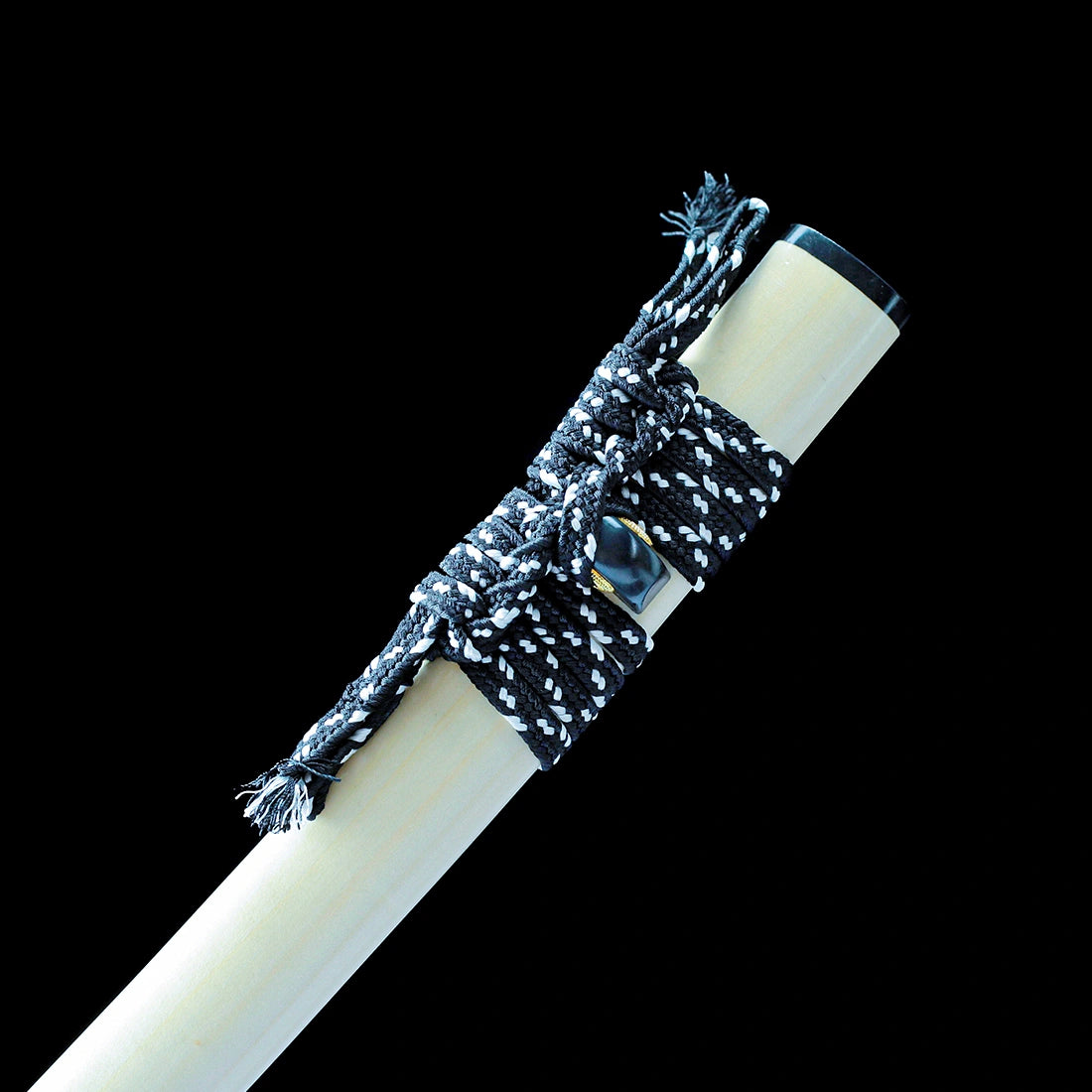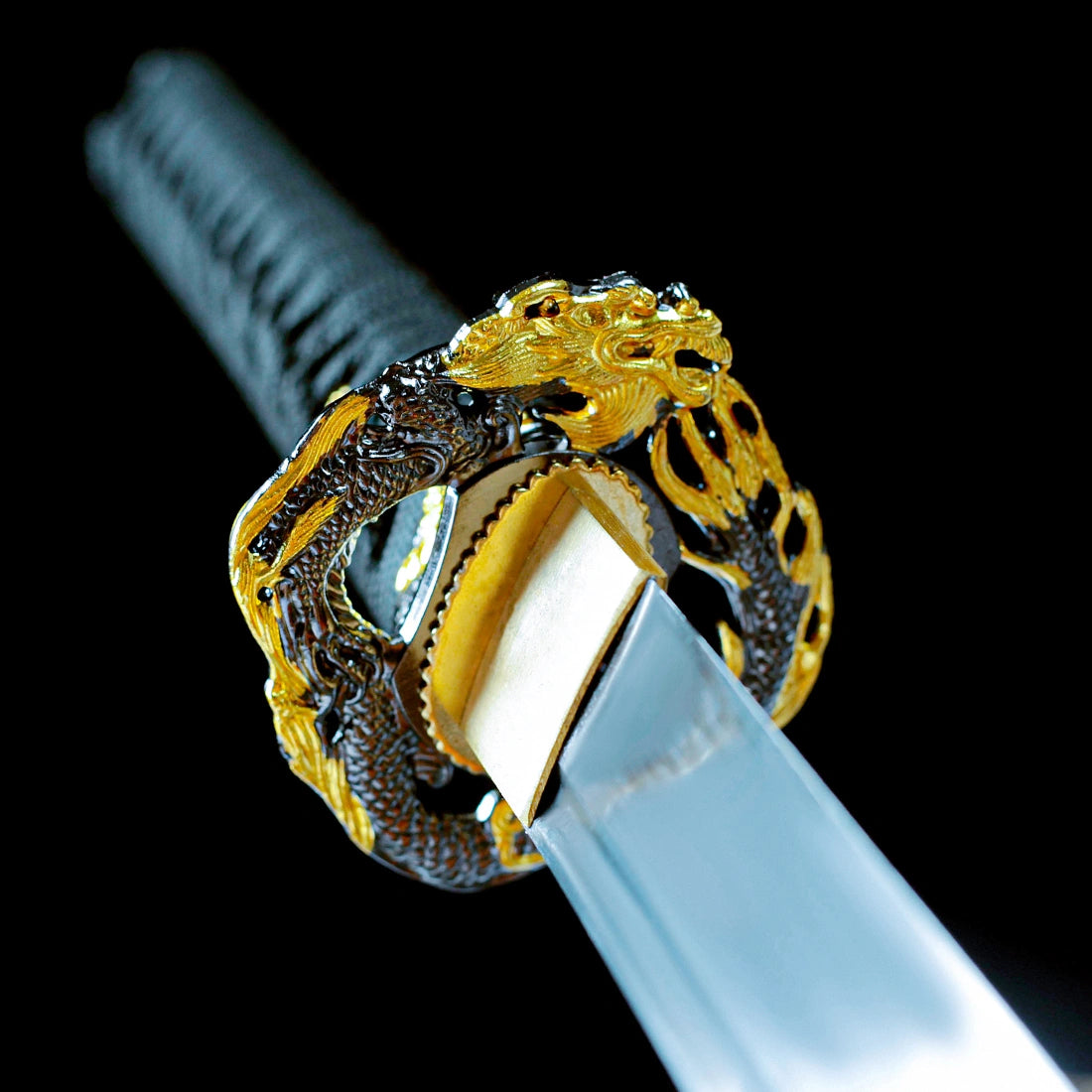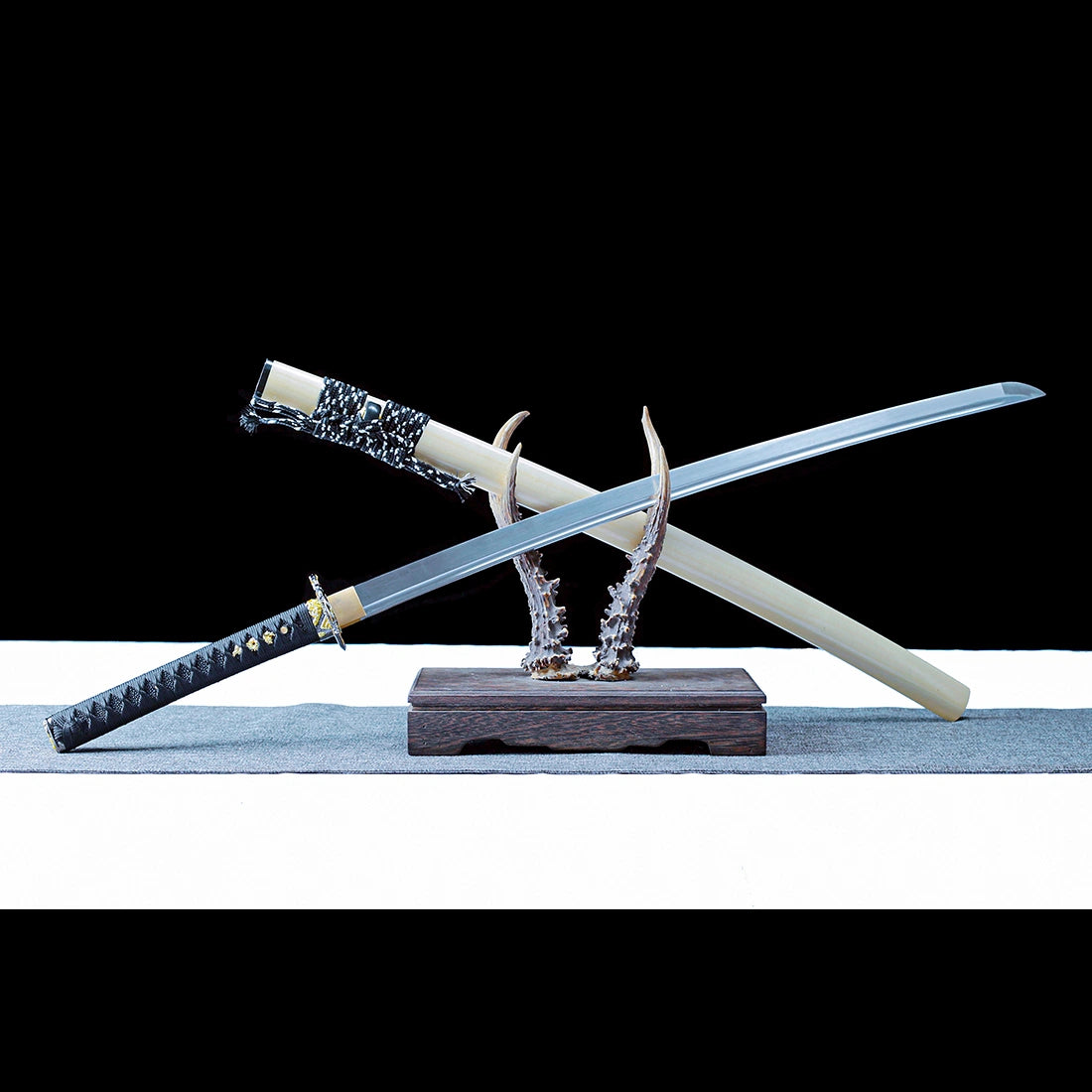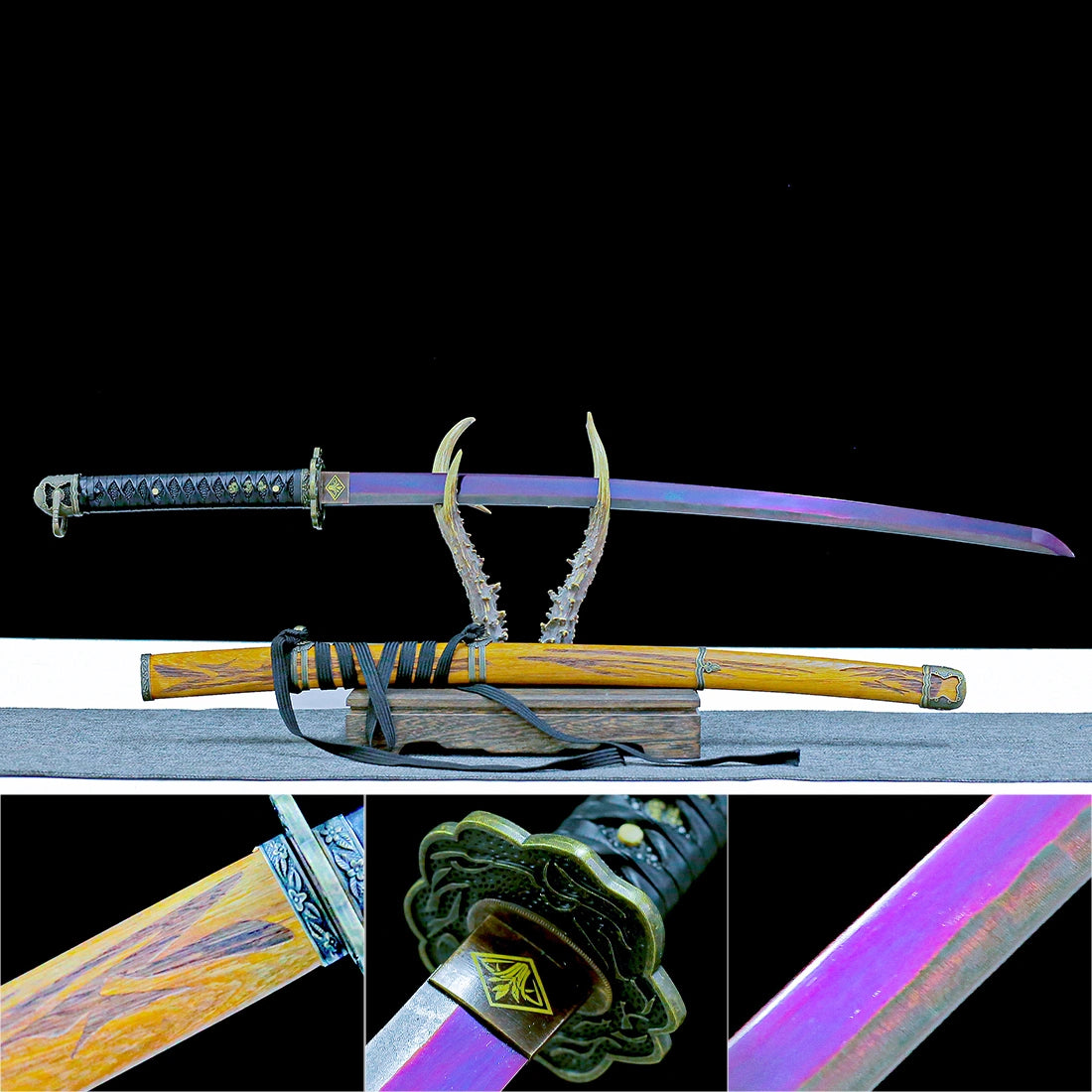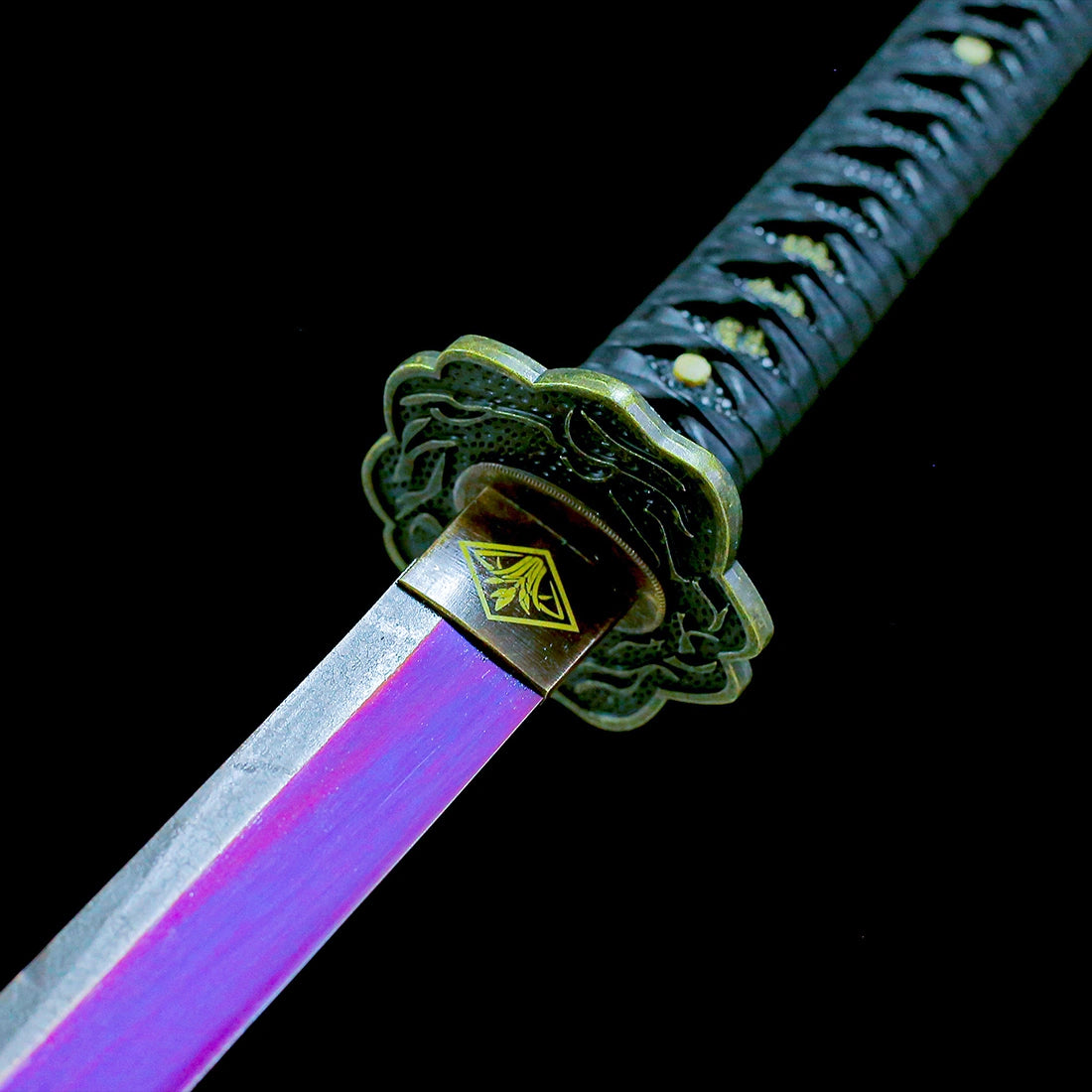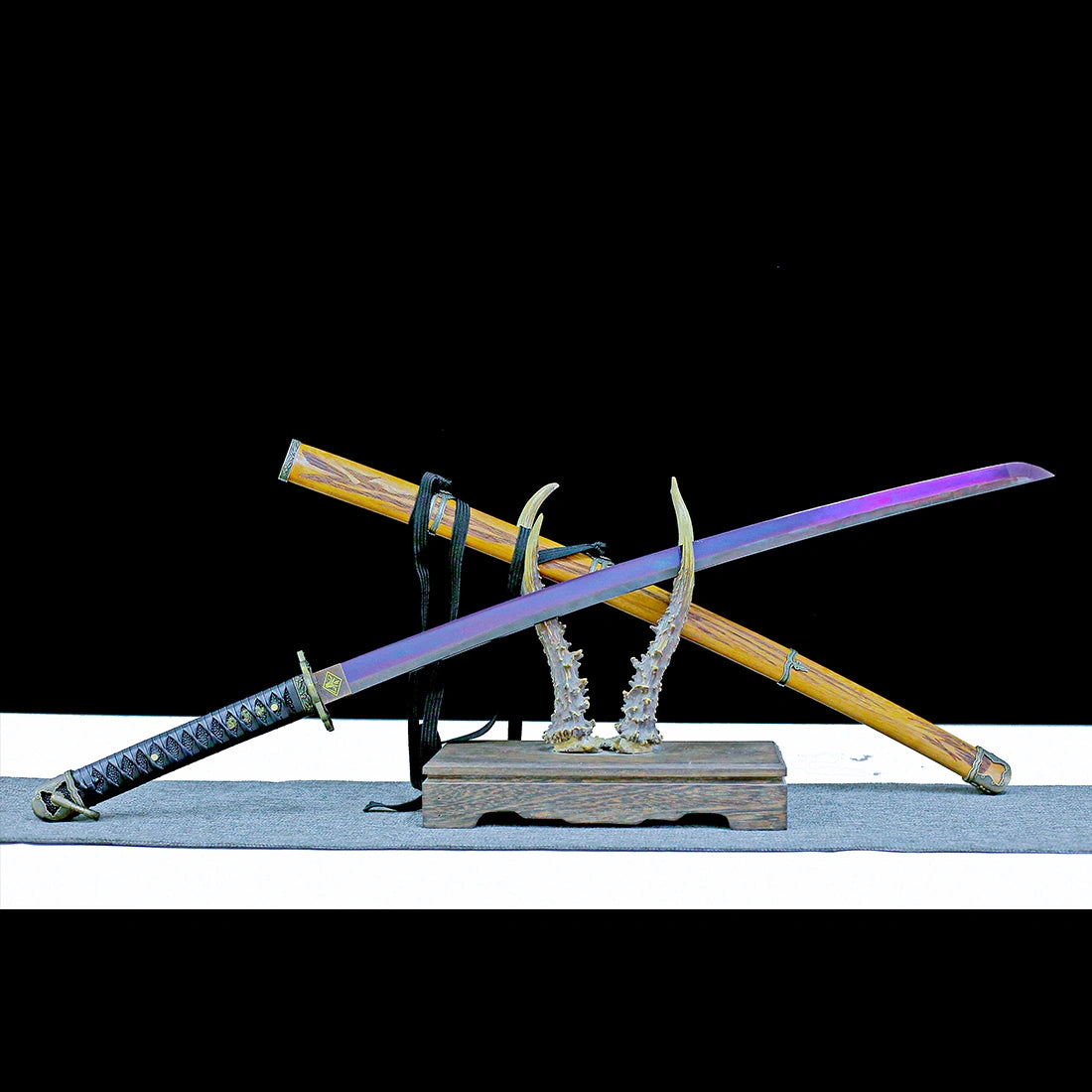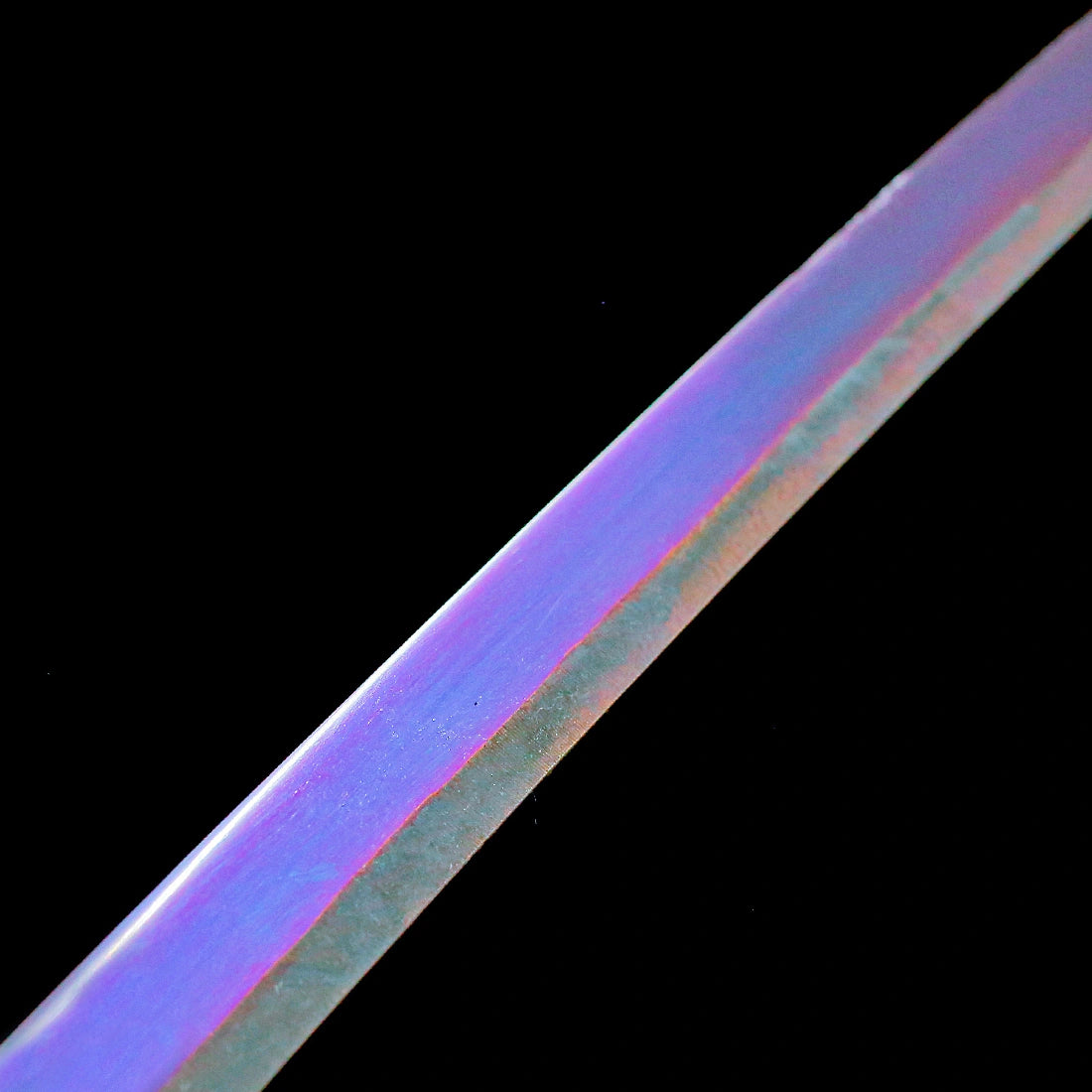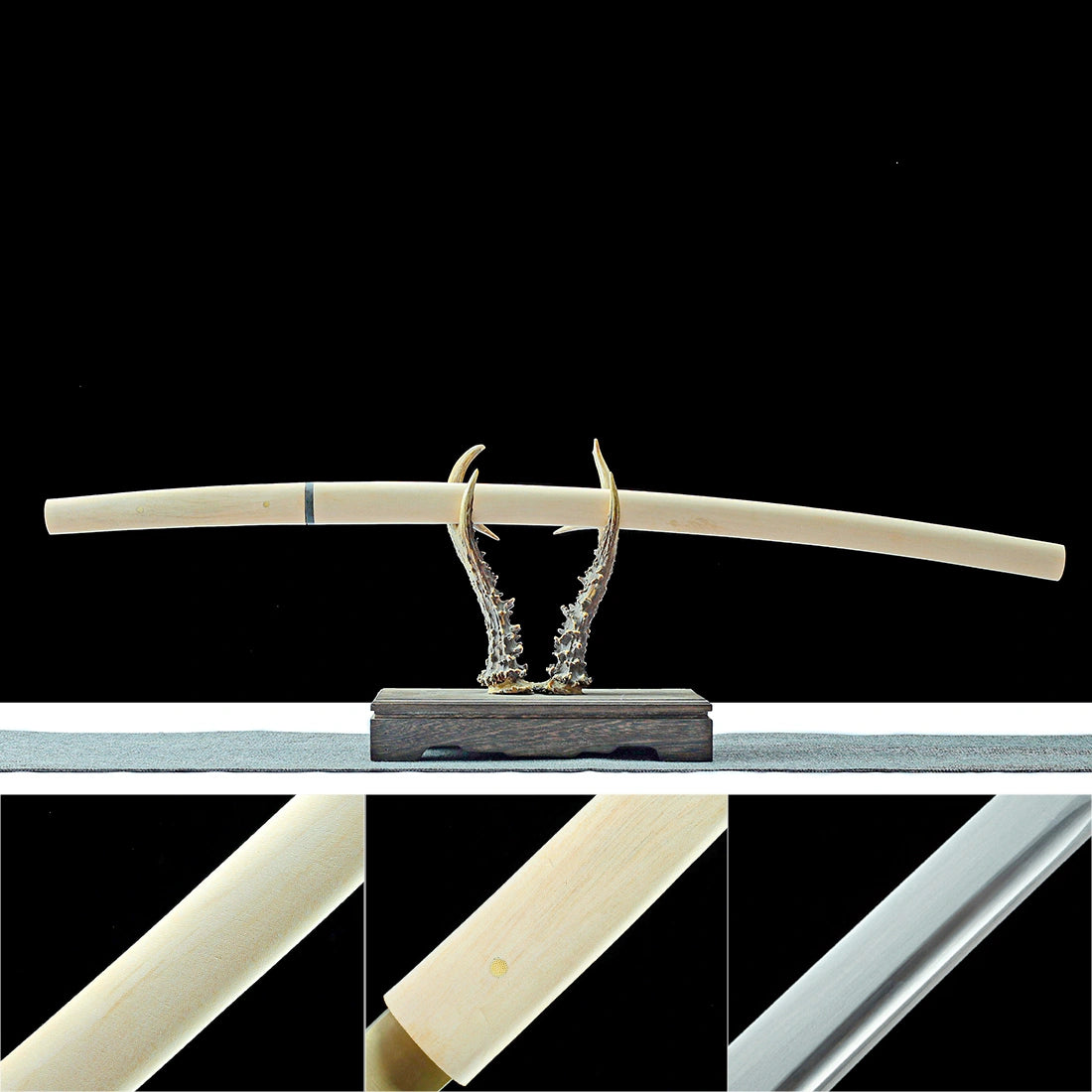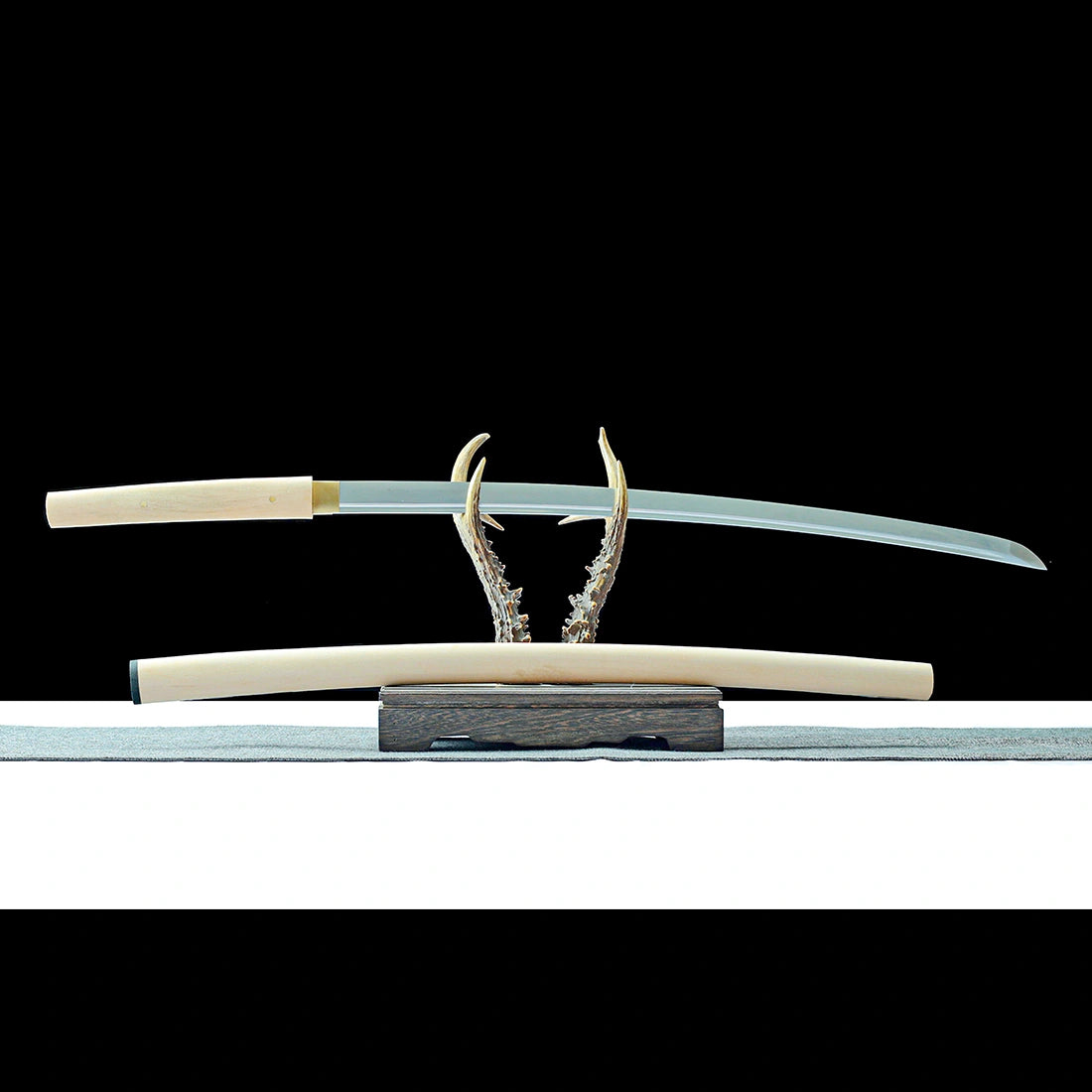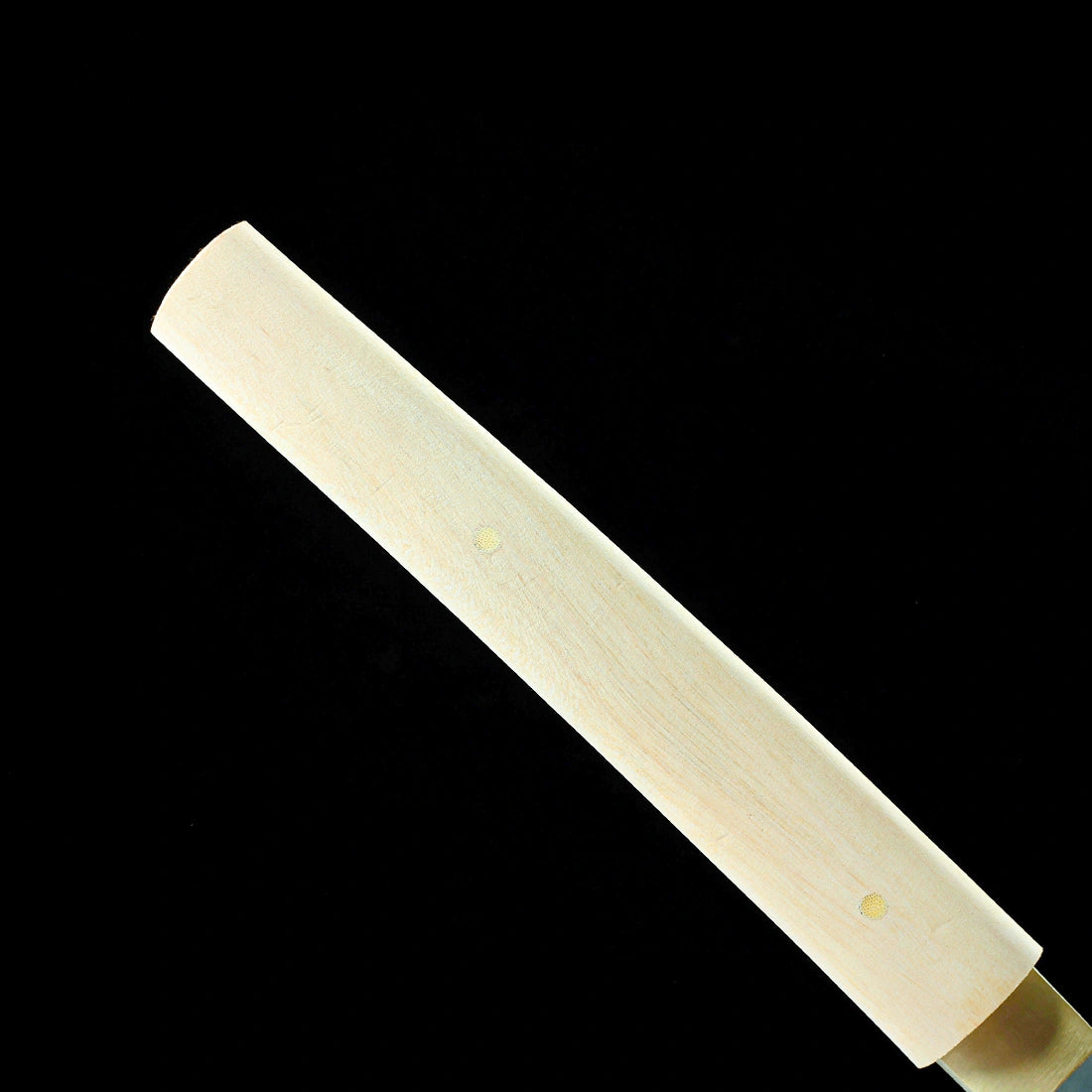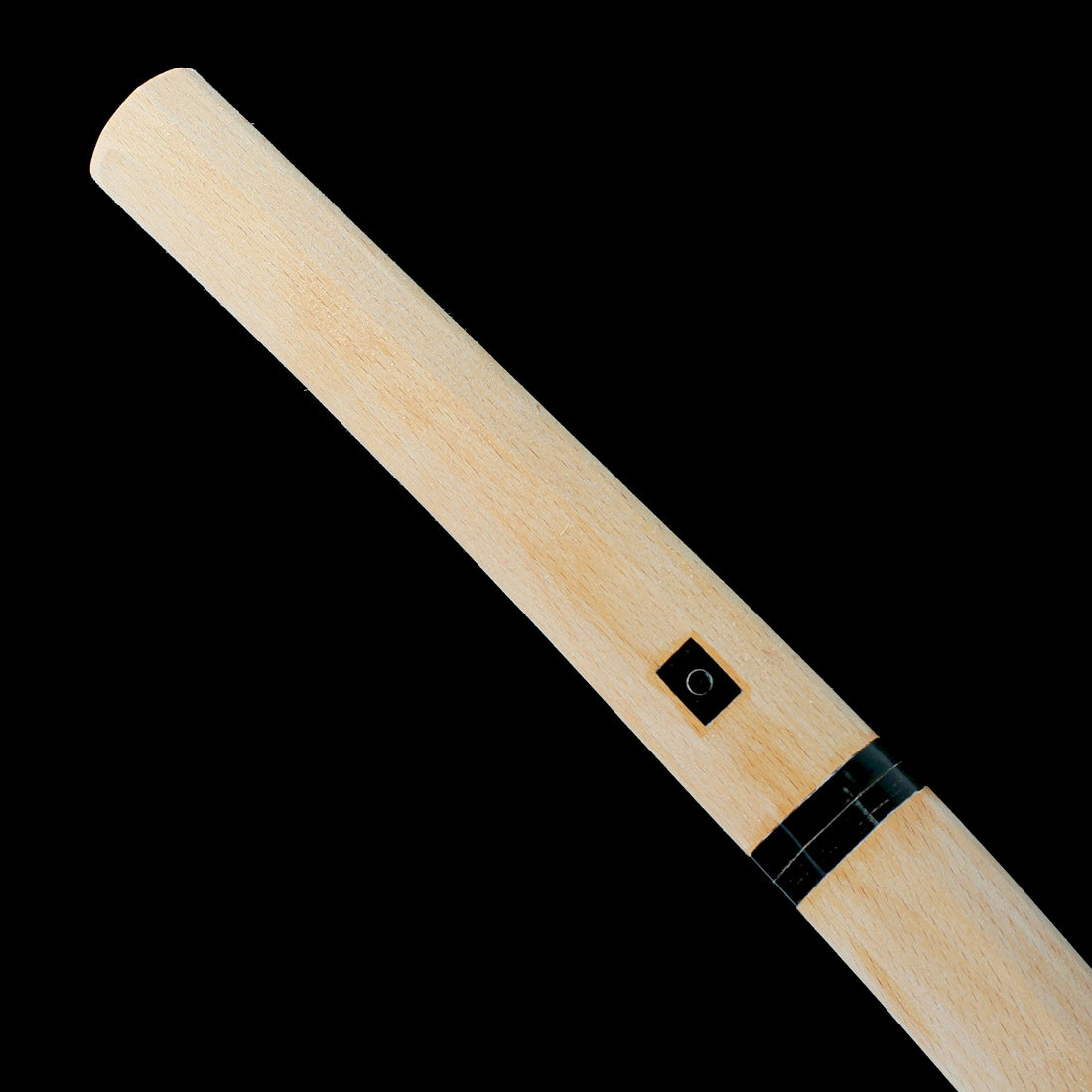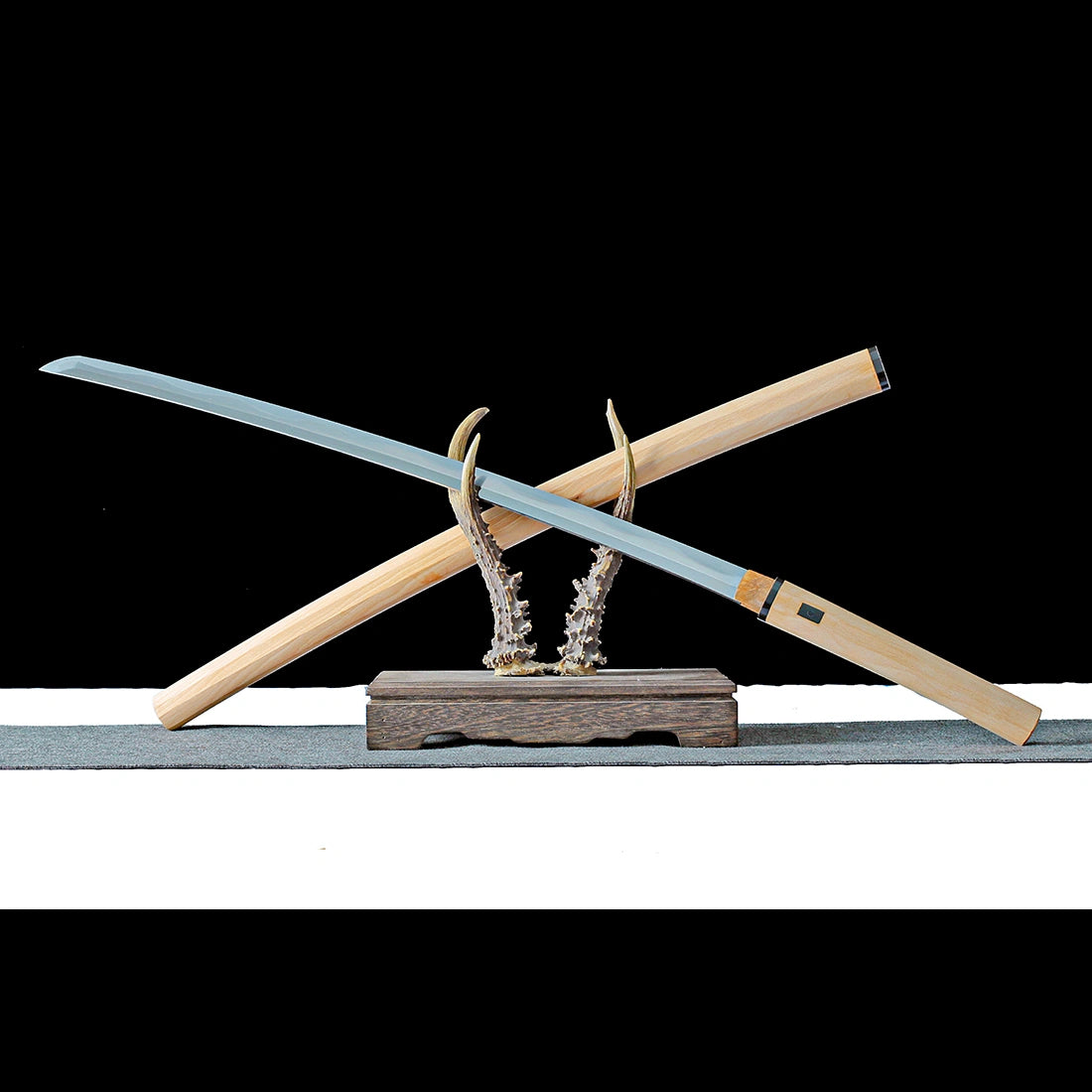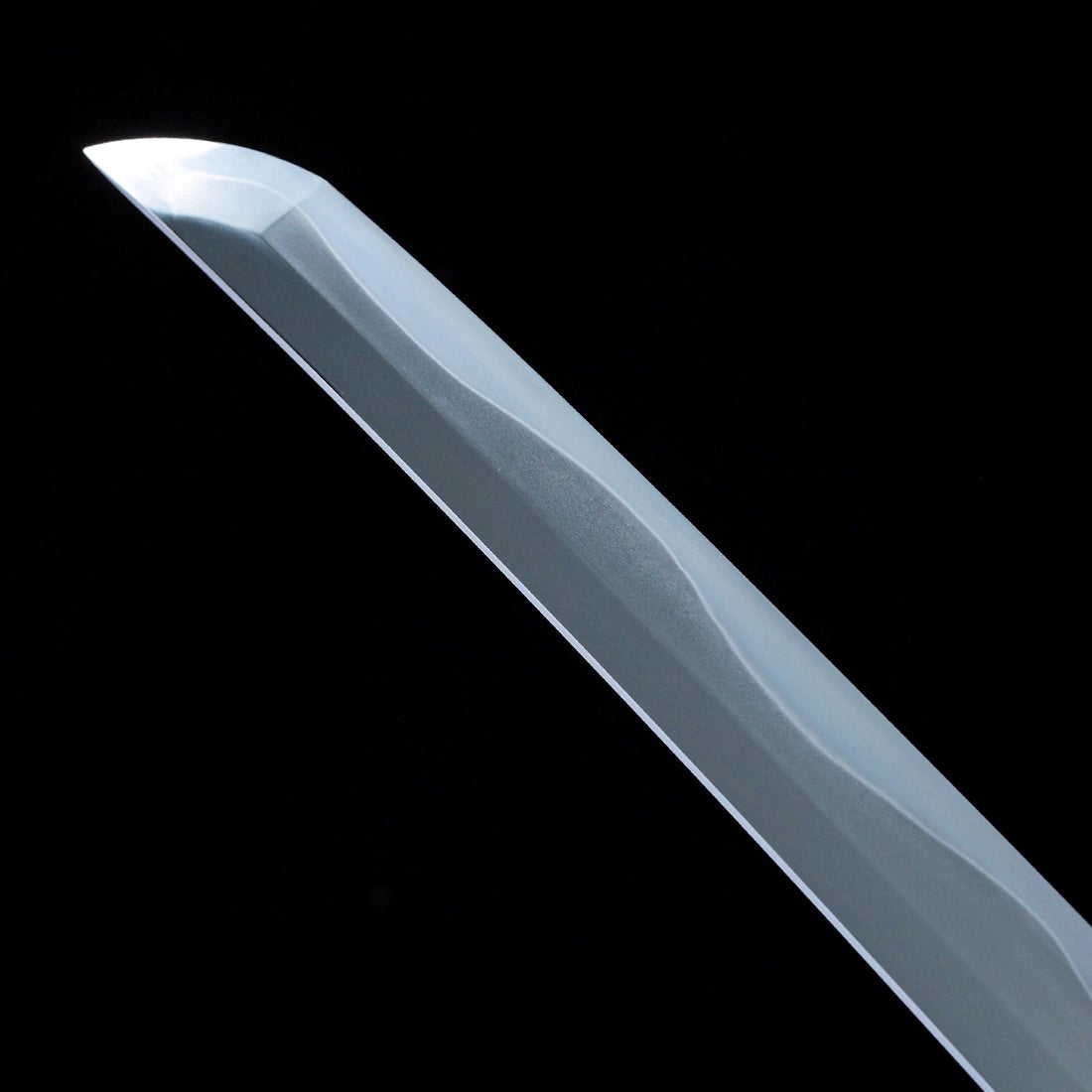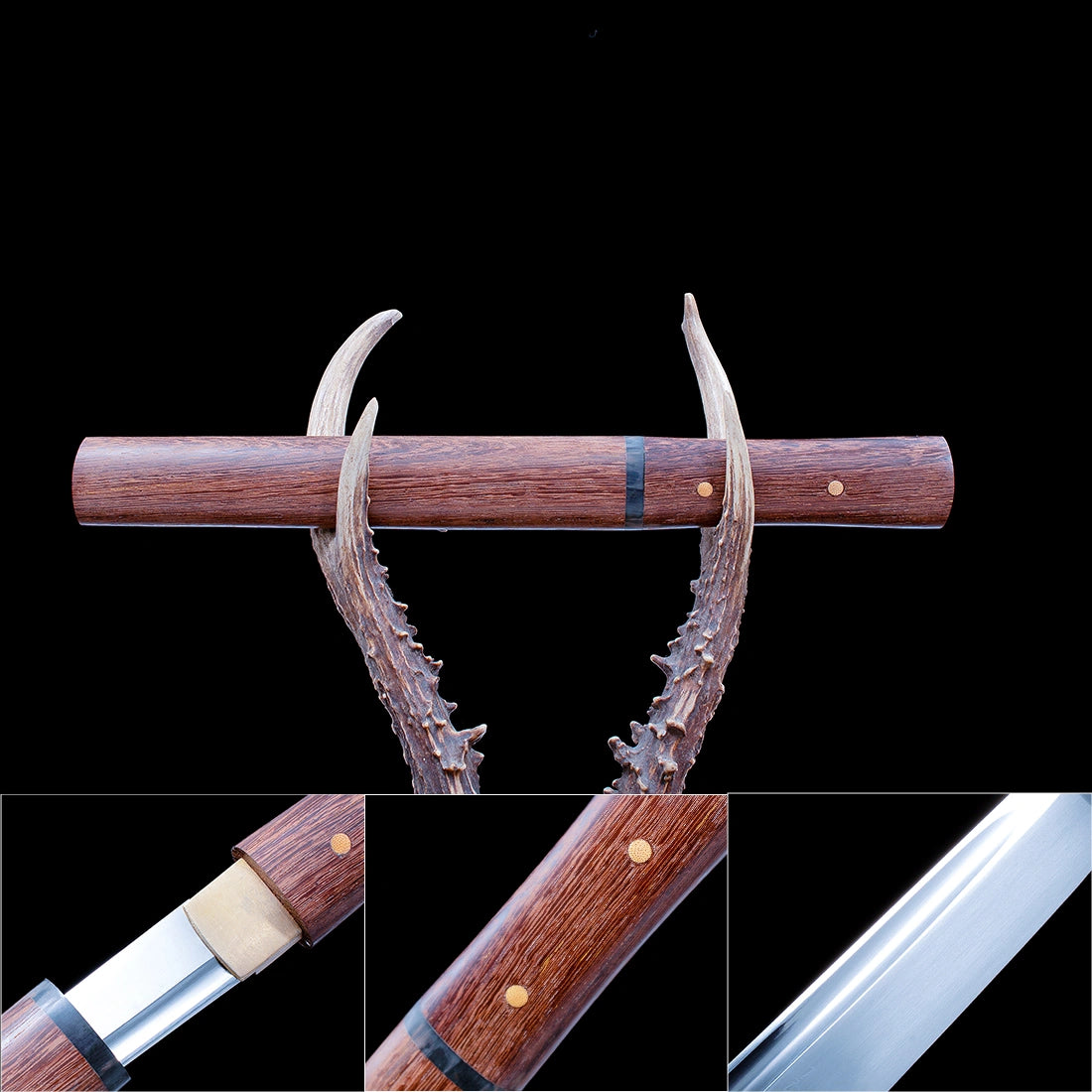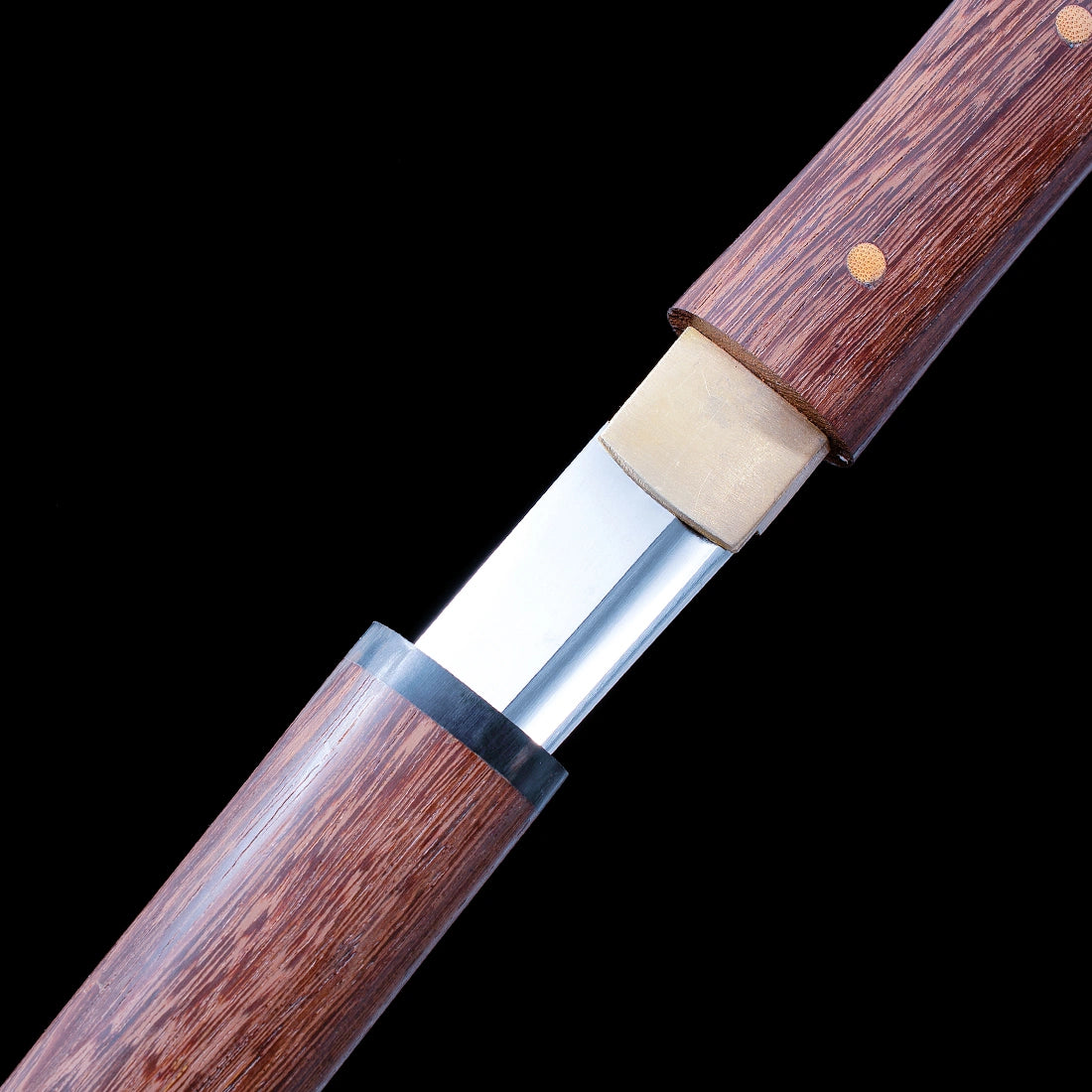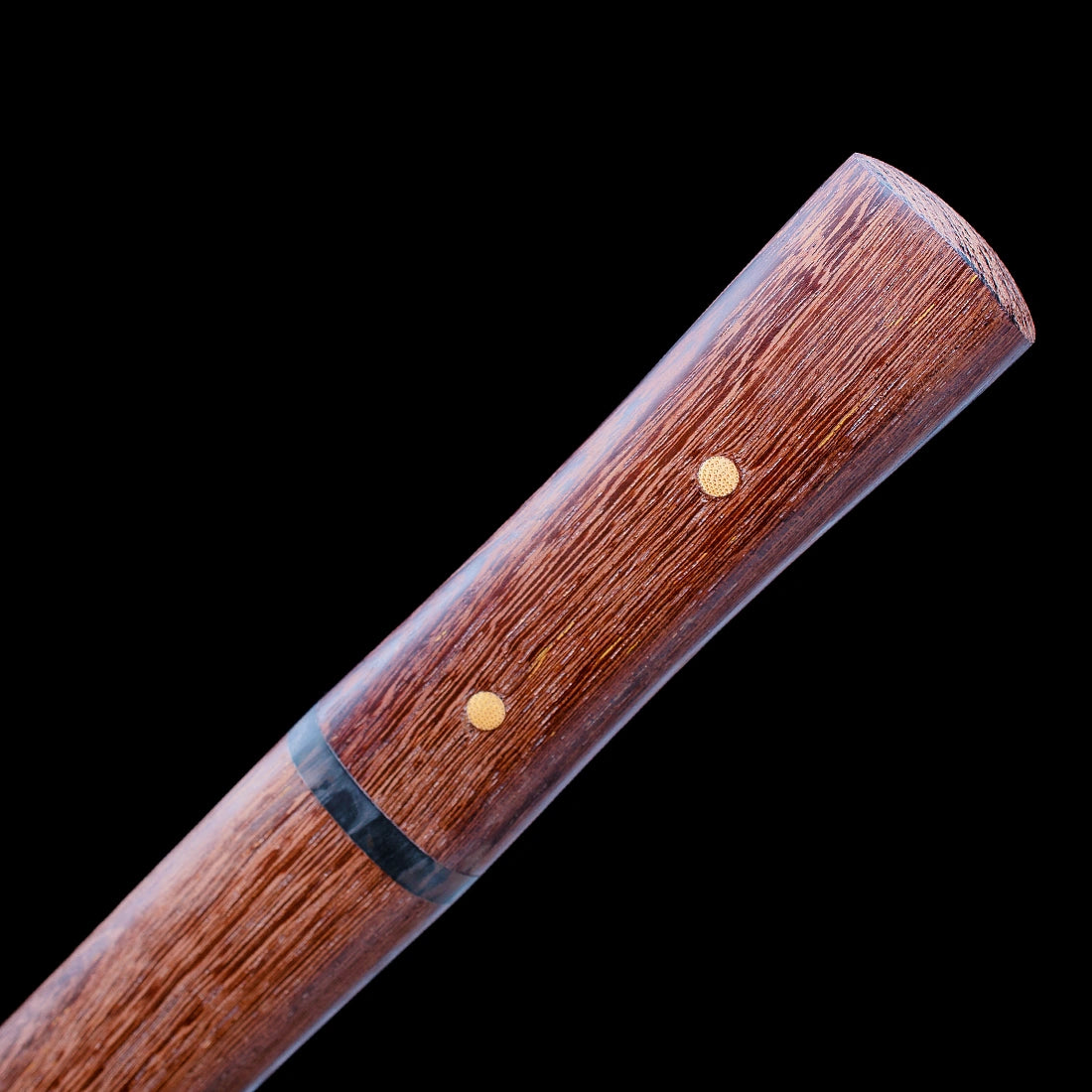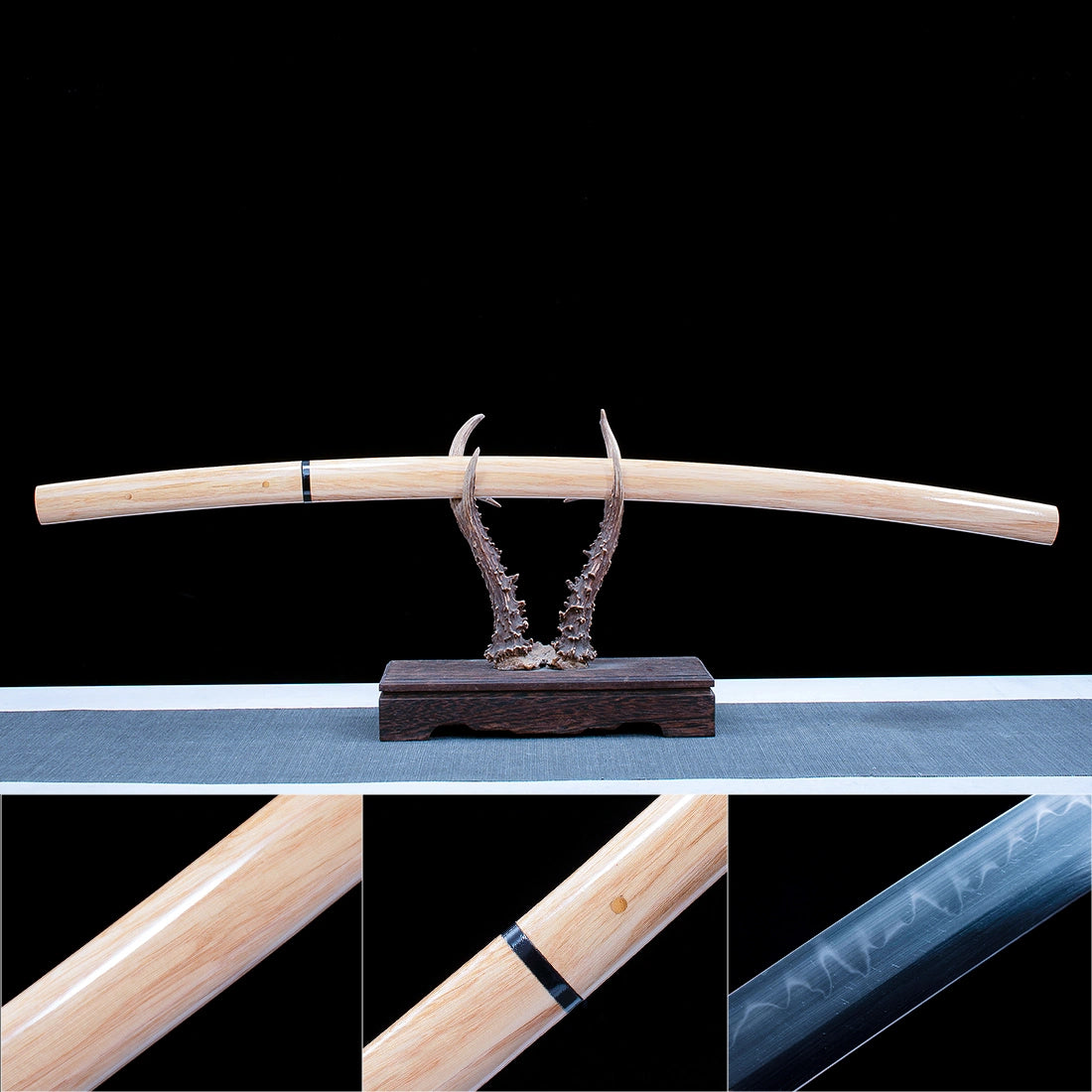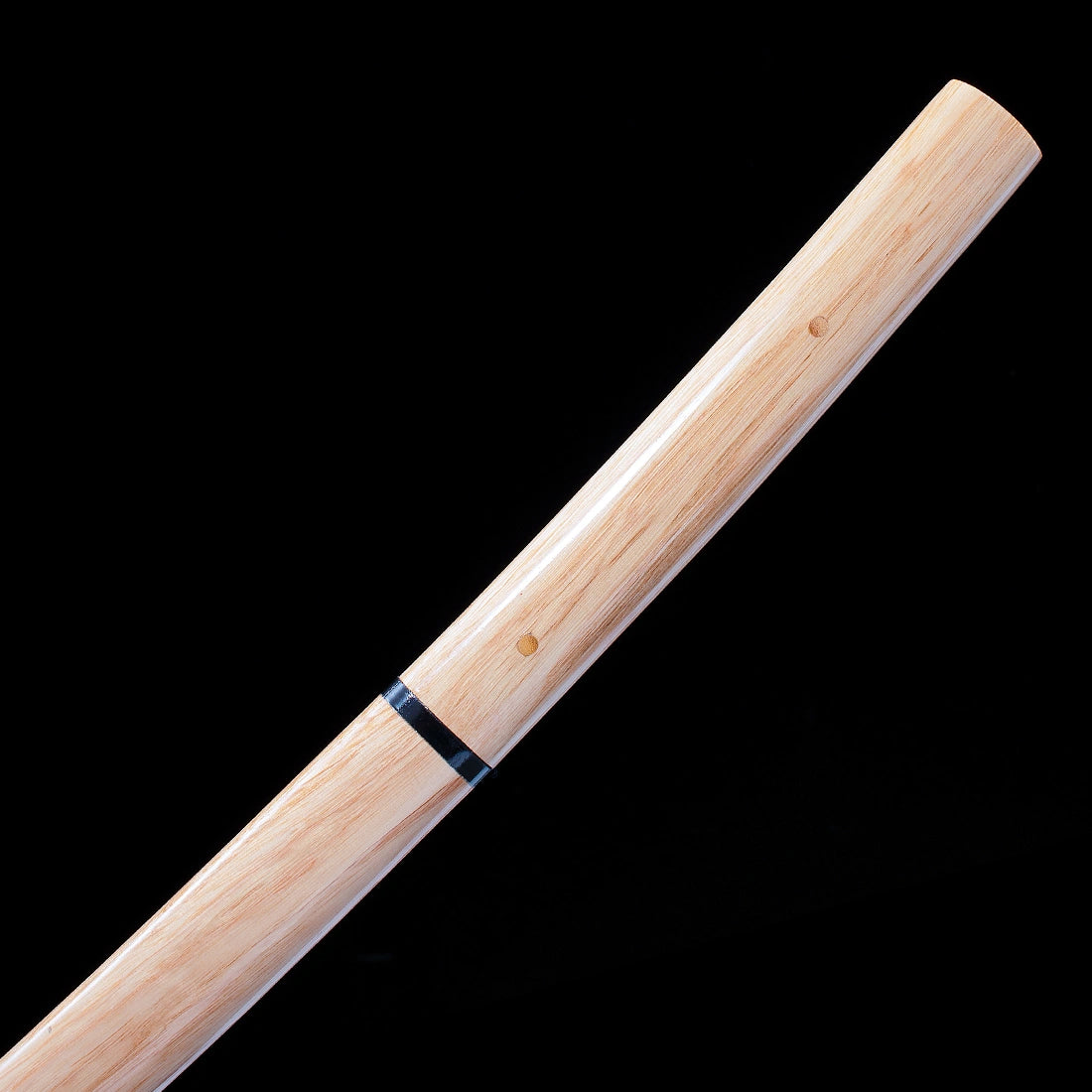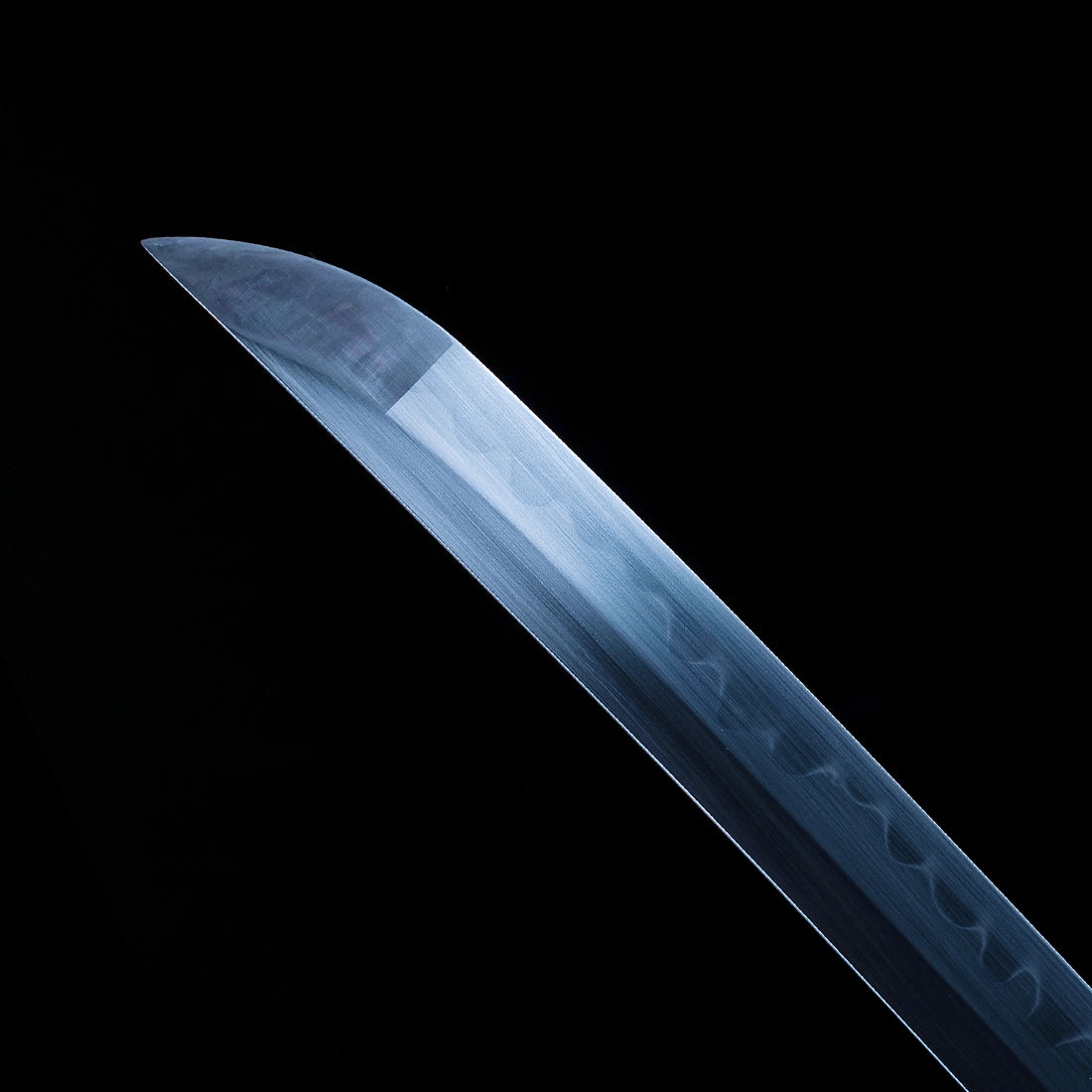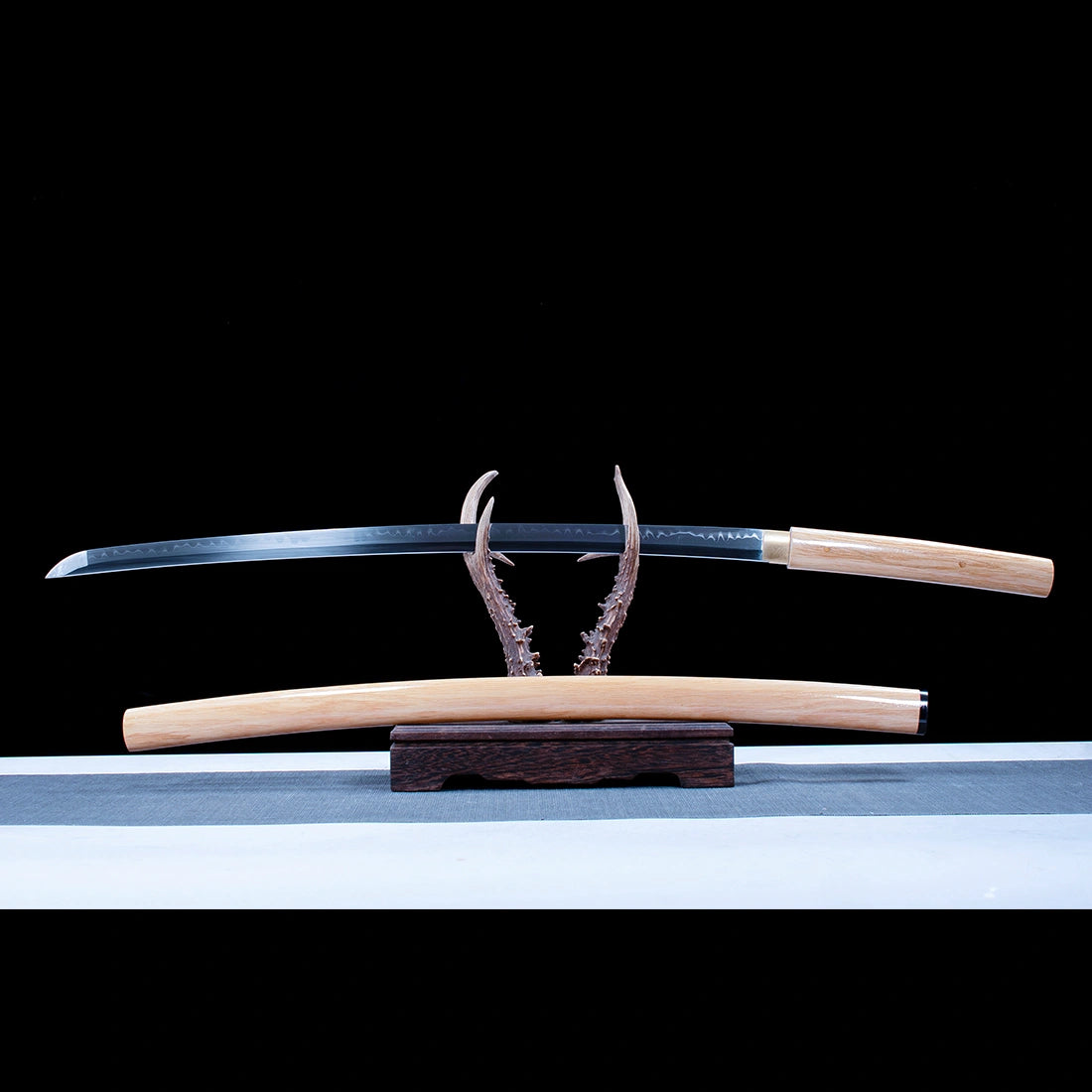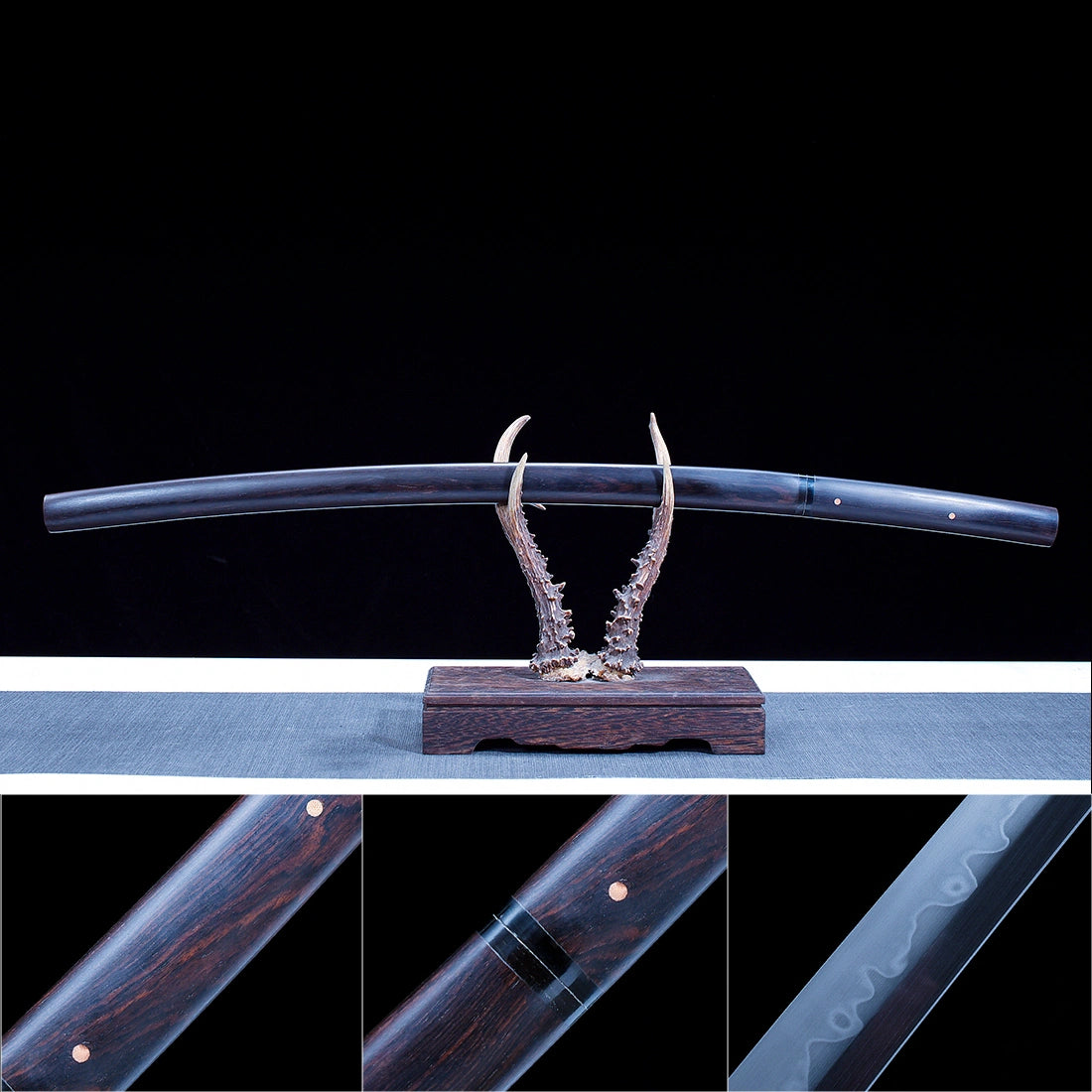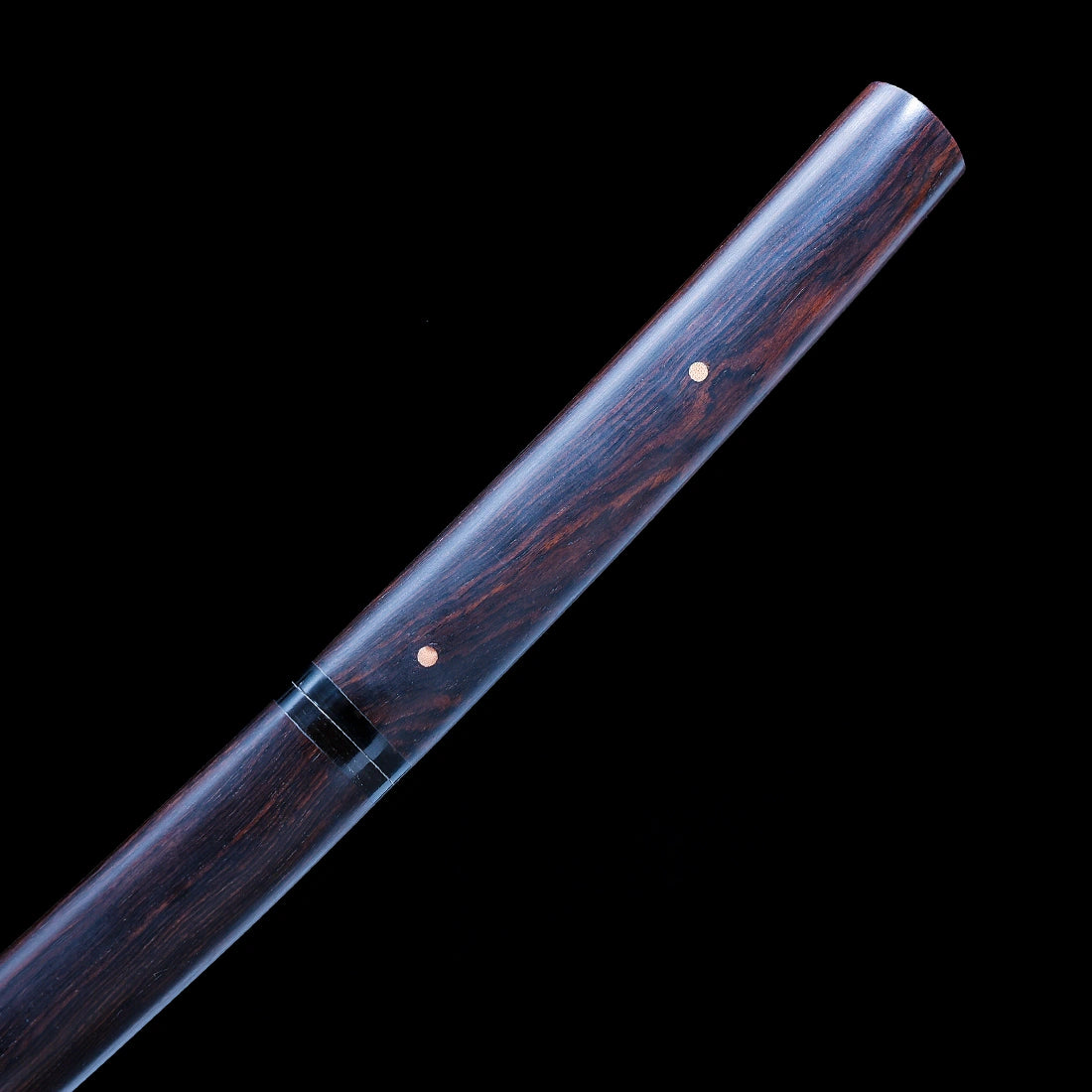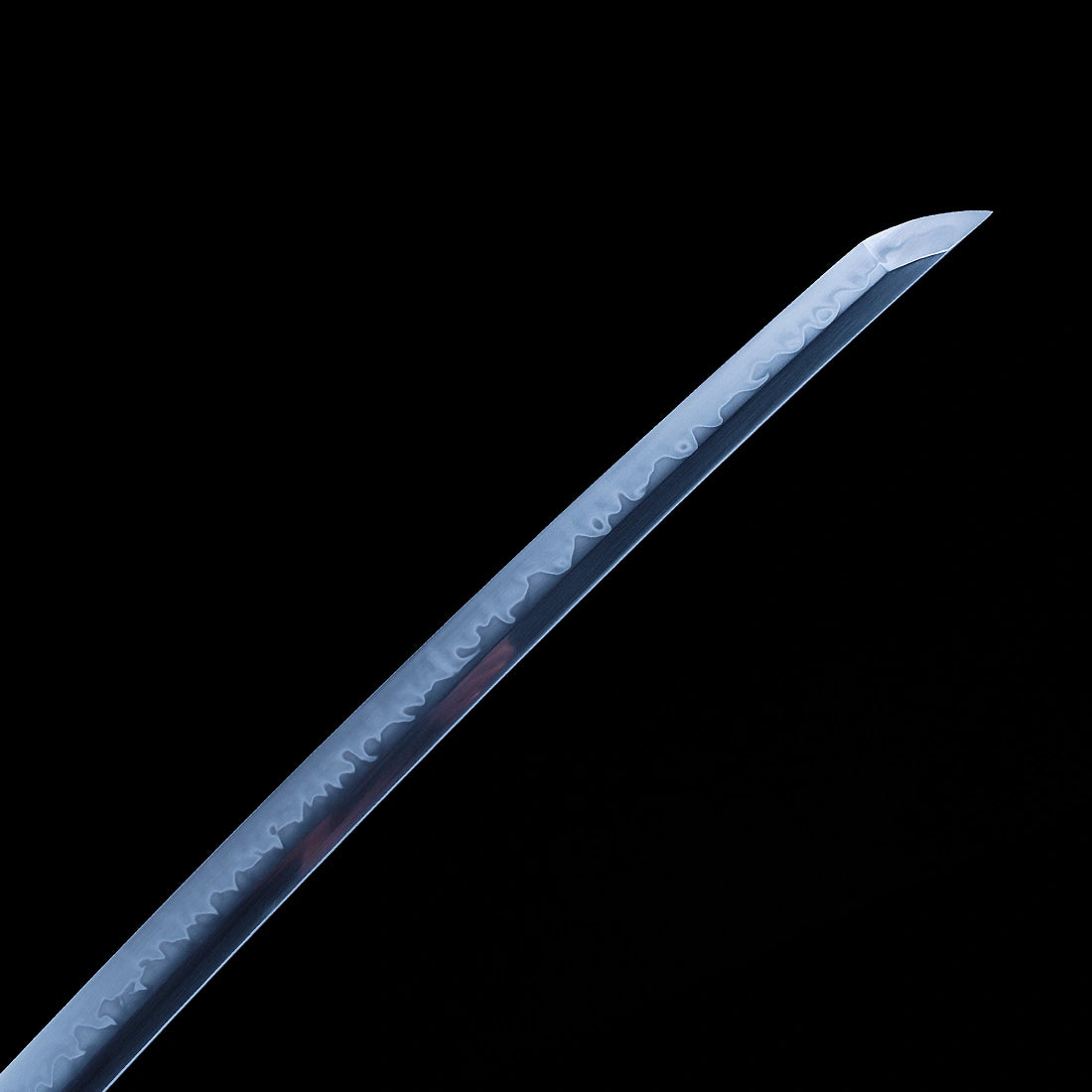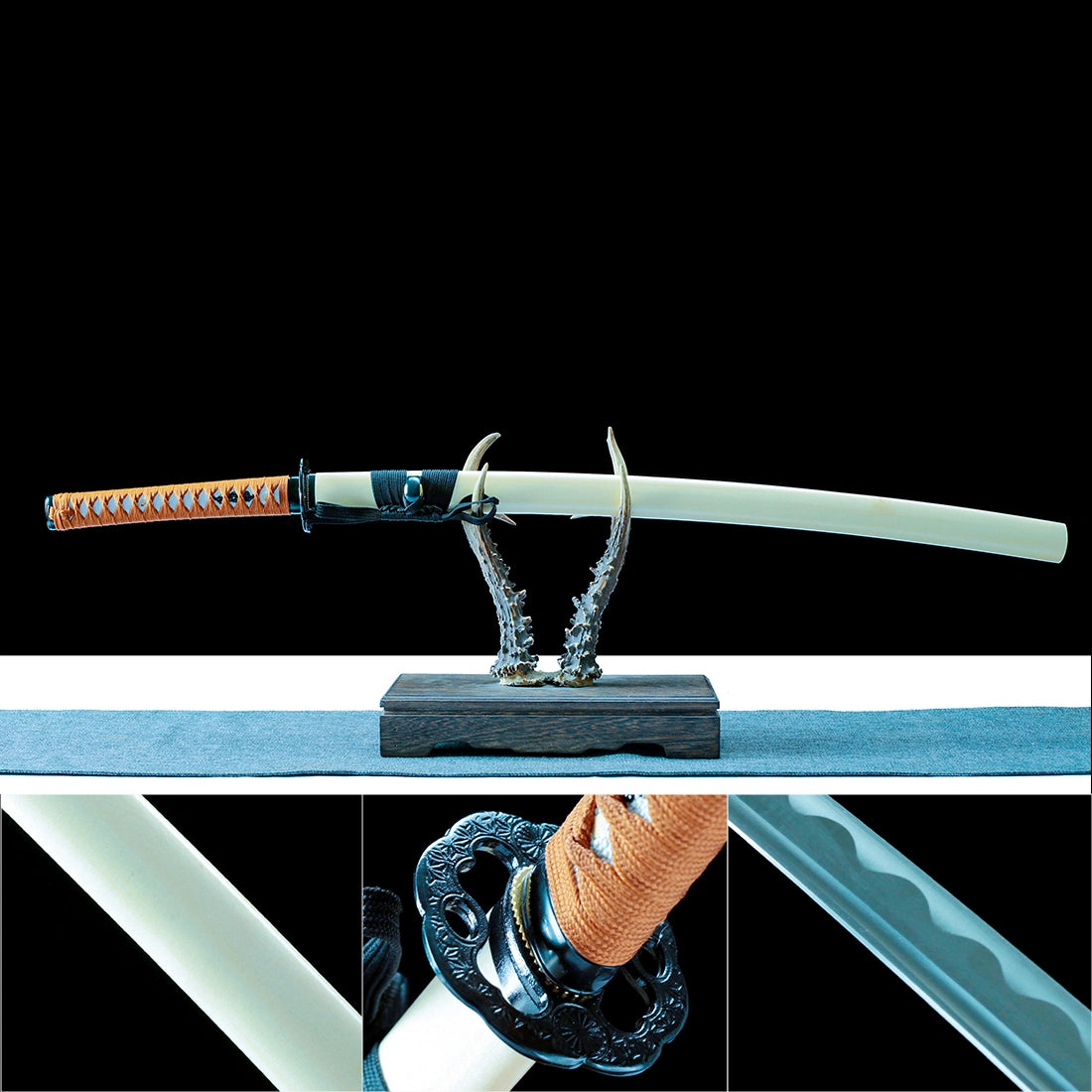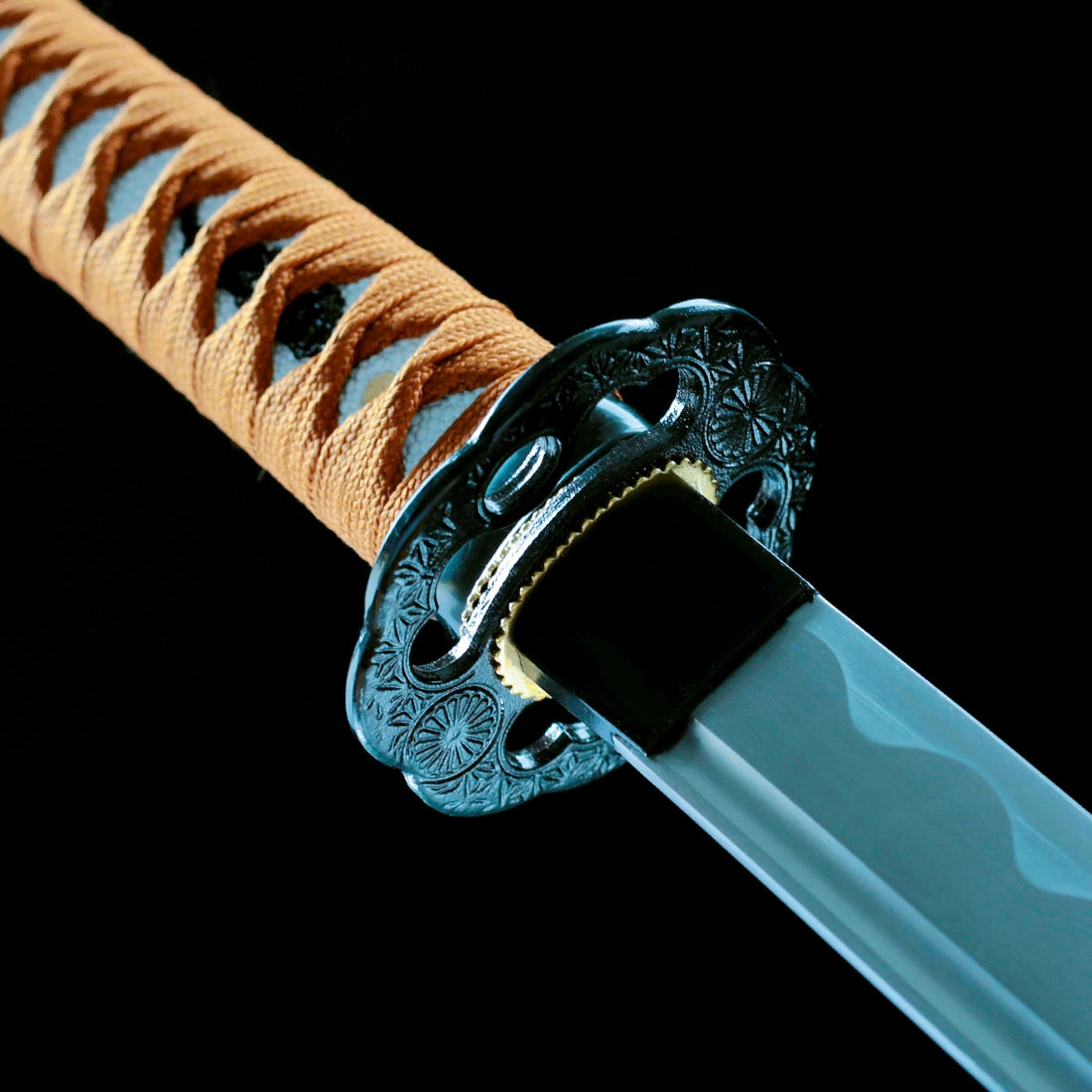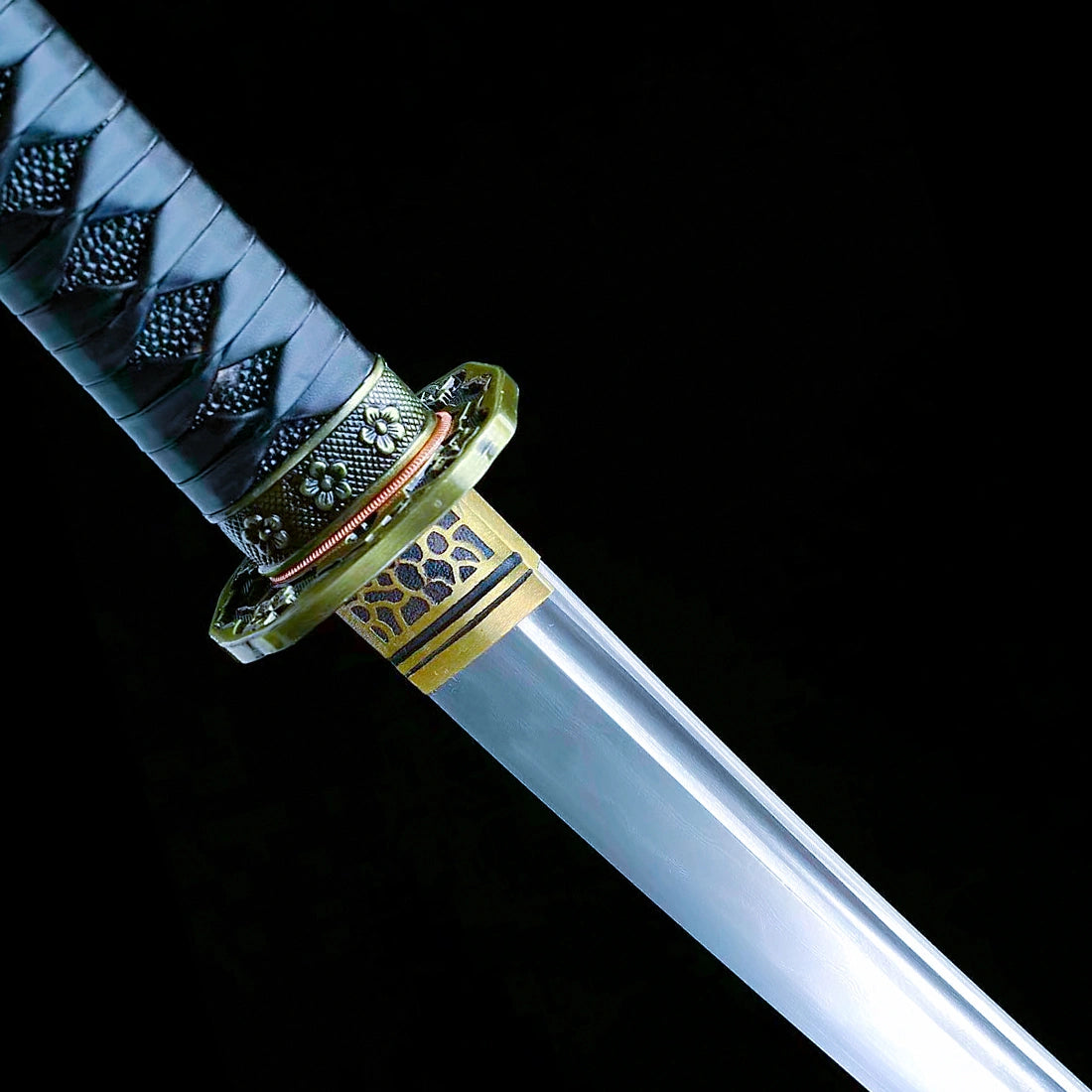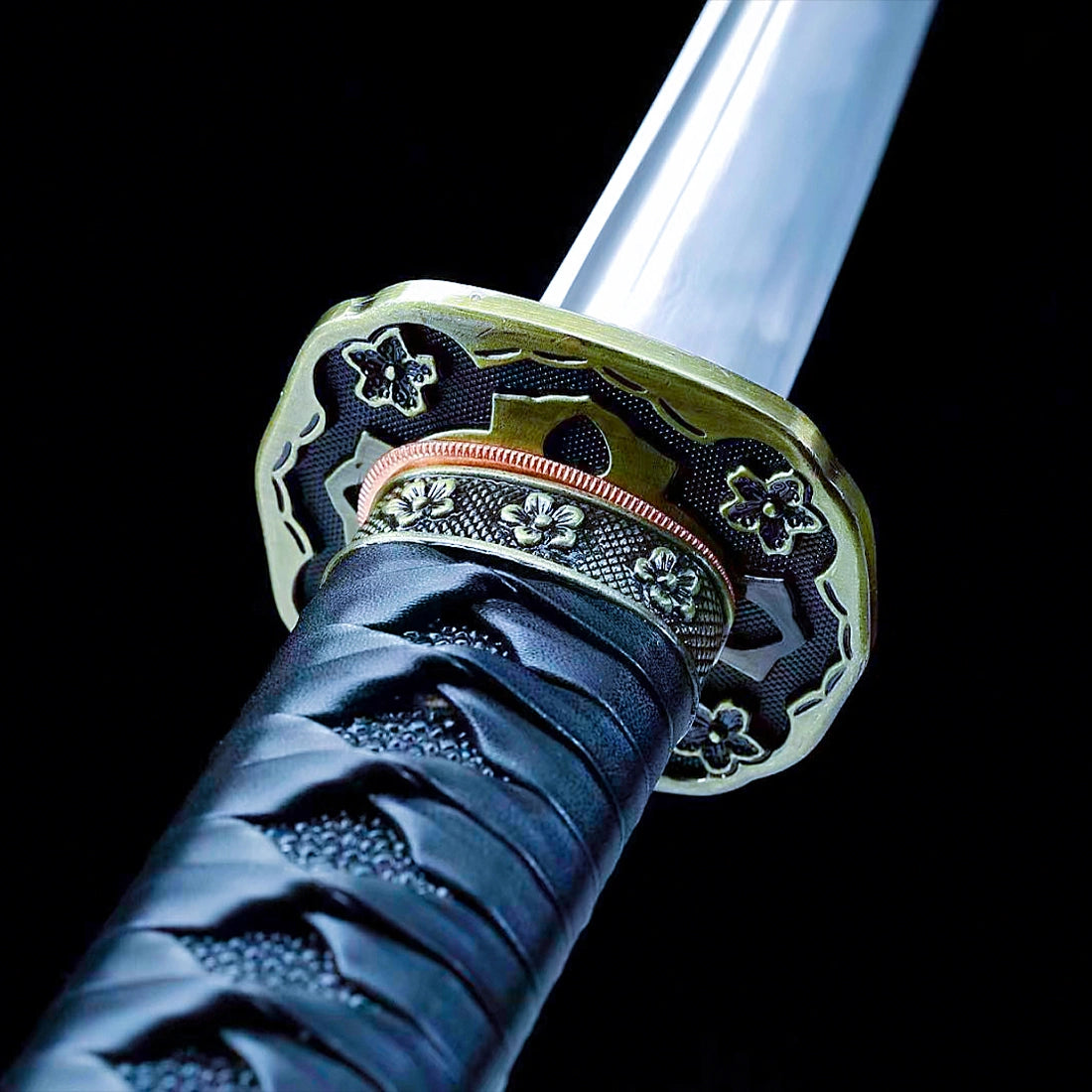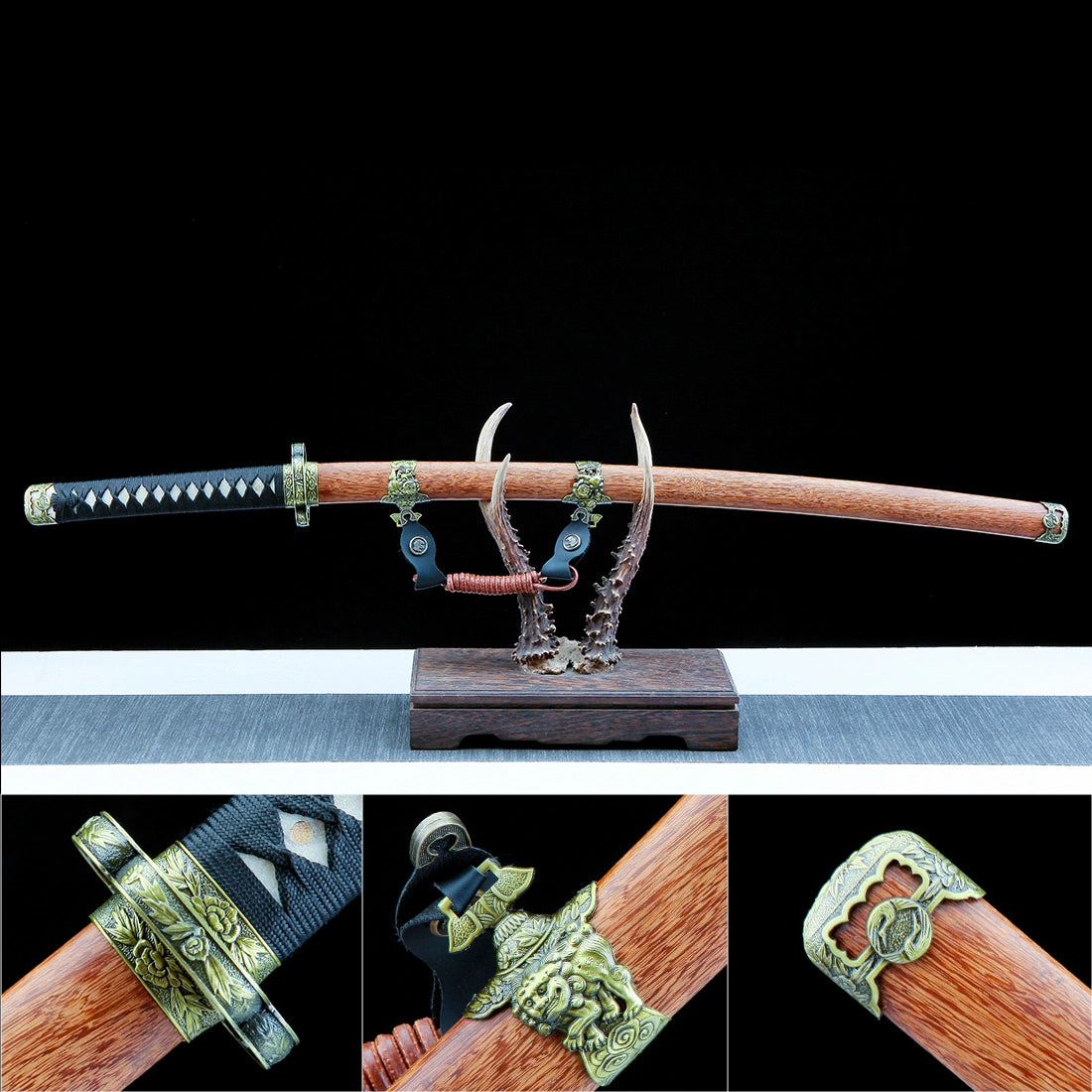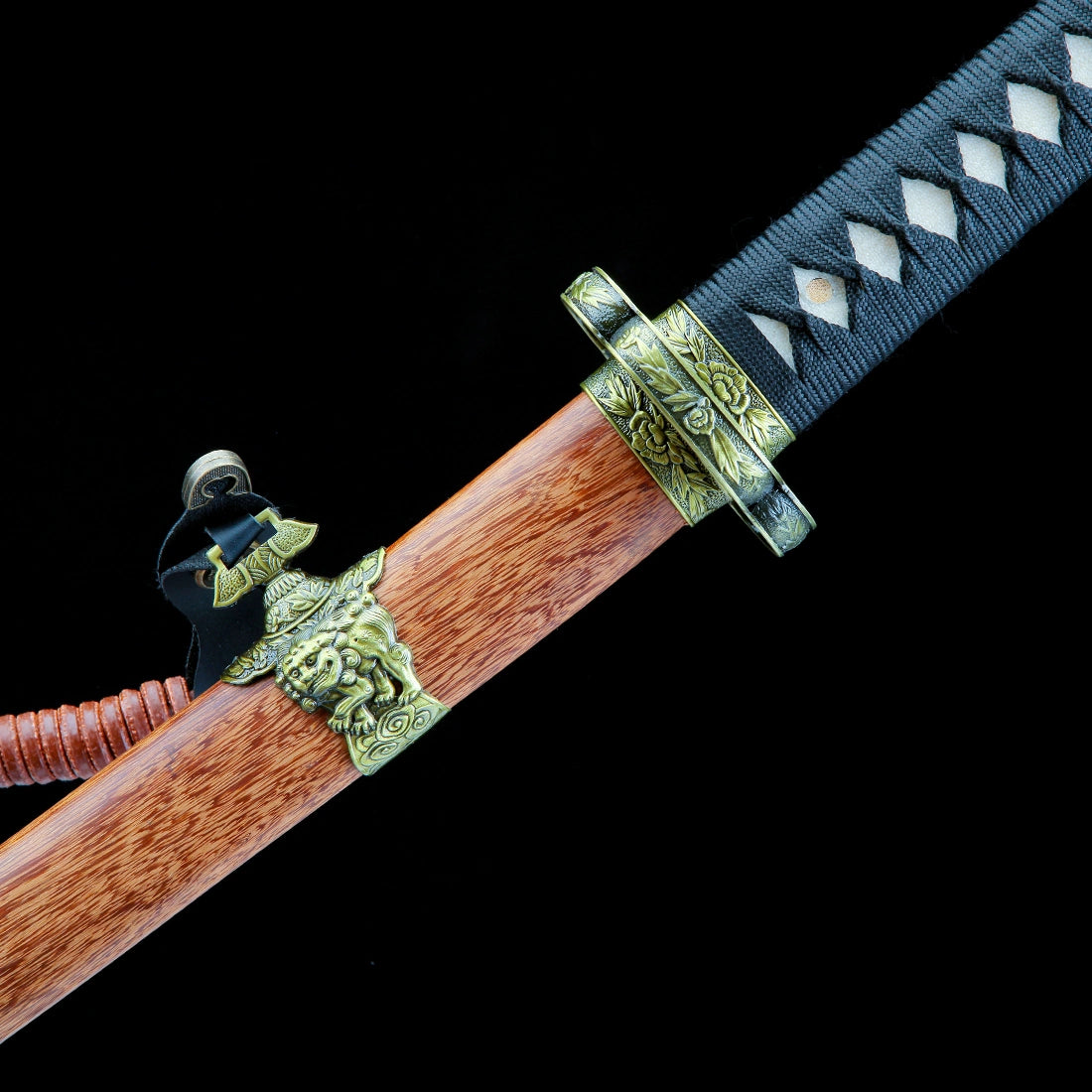What is a samurai sword?
What is a Samurai Sword? Understanding the Legacy of Japan’s Iconic Sword
Samurai swords, commonly known as katana, are among the most iconic and respected weapons in the world. With their curved blades, perfect cutting speed, and lethal precision, along with a rich history and unparalleled craftsmanship, they are not just weapons—they are symbols of honor, tradition, and art. If you're looking for real samurai swords or considering purchasing samurai swords for sale, understanding the uniqueness and value of these swords is important. This article will explore the history, craftsmanship, and significance of Japanese samurai swords, helping you better appreciate the heritage behind this legendary weapon.
What is a Samurai Sword?
A samurai sword is a traditional Japanese weapon, with the most famous being the katana, a single-edged curved sword typically measuring between 60 and 80 cm in length. The katana is designed to be drawn quickly and cut decisively, making it ideal for battle. It became the weapon of choice for the samurai class, the military nobility of feudal Japan.
Key Features of a Real Samurai Sword:
- Curved Blade: The curve of the blade enhances cutting efficiency and allows for rapid drawing, making it perfect for swift strikes.
- Single-edged Design: The sharp edge of the katana is designed for precision and powerful cutting.
- Long Handle: The handle is long enough to be gripped with both hands, providing better control during use.
- Tsuba (Guard): A guard protects the user’s hands and adds balance to the sword.
A true samurai sword is defined by its superior craftsmanship, a result of centuries of refinement and technique.
History of the Samurai Sword
The Birth of the Katana
The origins of the samurai sword can be traced back to early feudal Japan. The curved katana evolved from the earlier straight swords used during the Heian period (794-1185). However, it was during the Kamakura period (1185-1333), as mounted warriors began to dominate the battlefield, that the curved blade became essential.
By the Muromachi period (1336-1573), the katana became the primary weapon of the samurai. During this time, swordsmiths began to use hand-forging techniques, creating blades that were both practical and aesthetically beautiful. The samurai sword was no longer just a weapon—it became a symbol of the samurai’s identity and honor.
Symbol of the Samurai
For centuries, the samurai sword was not only a tool for battle but also a symbol of the samurai's honor, loyalty, and discipline—the core principles of the bushido code. The sword was more than just a weapon; it was a reflection of the warrior’s character and legacy.
The Craftsmanship of a Authentic Samurai Sword
Creating a samurai sword is a complex and highly skilled process. It requires selecting the highest quality materials, and at AUTHENTICKATANA, we use premium steels such as T10 carbon steel, Damascus pattern steel, and titanium-coated carbon steel, ensuring that each sword boasts perfect sharpness, durability, and beauty.
The Forging Process
The first step in making a samurai sword is forging the steel. The steel is heated and folded several times to remove impurities, improving its strength and toughness. This technique, known as folding, also gives the sword its unique grain patterns. The blade is then shaped into the traditional curve, a process that requires precision and skill.
Hardening and Polishing
Once the sword is shaped, it undergoes the quenching process, where the blade is rapidly cooled to harden it. This creates the distinctive hamon (temper line) that marks the difference in hardness between the cutting edge and the spine of the blade. After hardening, the sword is polished to a razor-sharp finish, making it not only functional but also visually stunning.
Full Tang Design
A hallmark of a true samurai sword is the full tang design, meaning the blade extends through the entire length of the handle, providing extra strength and durability. This design ensures that the sword is well-balanced, making it perfect for both practical use and display.
Why Choose a Real Samurai Sword?
Tradition and Craftsmanship
Owning a real samurai sword connects you to Japan’s rich history and craftsmanship. Each of our authentic samurai swords is hand-forged by skilled artisans who pour years of expertise and passion into every detail.
Collectible Value
For collectors, samurai swords are more than just weapons—they are tangible pieces of Japan’s feudal history. Purchasing a samurai sword for sale is not just about acquiring a weapon; it's about preserving a piece of culture. Whether used as a practical real samurai sword or displayed as a stunning authentic samurai sword, these blades hold significant cultural and historical value.
Quality and Durability
A samurai sword is not just a decorative item. Many collectors and martial artists value the authentic samurai sword for its practical utility and performance, especially those crafted for combat and made with exceptional quality. Whether you are purchasing a Japanese samurai sword for display or training, its sharpness, balance, and durability are unmatched.
How Much are Samurai Swords
At AUTHENTICKATANA, we offer high-quality real samurai swords at an affordable price. While our swords are meticulously hand-forged and made from premium materials like T10 carbon steel, Damascus pattern steel, and titanium-coated carbon steel, our prices typically range from $200 to $300, allowing you to own a beautiful and well-crafted Japanese samurai sword without breaking the bank.
How to Care for Your Samurai Sword
Proper care will ensure that your samurai sword remains in excellent condition, maintaining its appearance and functionality. Here are some tips for caring for your sword:
- Clean the Blade Regularly: After use, wipe down the blade to remove fingerprints, moisture, and dirt.
- Apply Oil: Coat the blade with a light layer of oil to prevent rusting.
- Store Properly: Keep the sword in a dry, cool place to avoid exposure to heat or humidity.
Conclusion
A real samurai sword is not just a weapon; it is a symbol of honor, a testament to history, and a work of art that blends craftsmanship with tradition. Whether you are looking for samurai swords for sale, planning to purchase a real samurai sword for your collection, or seeking a Japanese samurai sword for training, understanding the legacy behind these blades adds to their value.
At AuthenticKatana, we are proud to offer real samurai swords for sale that embody the tradition and artistry of Japan. Whether you're buying one for practical use, as a collectible, or as a beautiful display piece, our authentic samurai swords offer unmatched quality and a truly unique experience.
How to carry a samurai sword?
How to Carry a Samurai Sword: A Guide to Proper Handling and Etiquette
Carrying a samurai sword (katana) is not just about convenience; it is deeply tied to tradition, respect, and the samurai spirit. Whether you’re a collector, martial artist, or sword enthusiast, understanding how to carry a real samurai sword properly is crucial for safety and honoring its cultural significance. This guide will explore how to carry your samurai sword, focusing on traditional methods and modern practices.
1. Positioning the Sword (How to Wear It)
The traditional way to carry a samurai sword is to keep it in a position that allows for quick access while ensuring the blade is safe. Due to the katana’s curved design, extra care must be taken to ensure the blade is safely stored, yet easily accessible when needed. Here are the methods to carry the sword:
- Tora-kake (腰掛け): For most traditional uses, the sword is worn on the left side of the body (for a right-handed user), using a belt called obi. The blade is positioned facing upward, with the blade pointing towards the wearer’s body. This allows for a swift and smooth drawing of the sword.
- Kake-iro (斬り下げ): Some martial artists and practitioners may choose to wear the sword downward, with the blade facing down, especially for long trips. However, this limits the speed of drawing the sword, so the upward-facing method is preferred in combat situations.
2. Proper Wearing of the Samurai Sword
- Sword Placement: Ensure the sword is secured through the obi (belt) or a specialized sword strap, with the tsuka (handle) facing forward. The tsuba (guard) should rest just below the waist, and the sword should remain level, slightly tilted forward. This positioning ensures smooth drawing of the sword.
- Drawing the Sword (Iaijutsu): To draw the sword, grasp the tsuba with the left hand, and hold the tsuka with the right. The motion should be swift and smooth, cutting diagonally in one motion, allowing you to enter into combat seamlessly. This technique is part of Iaijutsu (the art of drawing and cutting), a key element of Kenjutsu (swordsmanship).
3. Carrying the Sword in Public
In traditional Japan, carrying a samurai sword was a privilege reserved for the samurai and nobility, but in modern society, there are strict laws regarding carrying swords in public. Many countries and regions have clear regulations about carrying blades, so it is essential to be aware of local laws and regulations to ensure compliance.
4. Safety Considerations
- Do Not Draw the Sword Without Cause: In traditional practice, a samurai sword is only drawn when absolutely necessary. This practice prevents accidental harm and shows respect for the sword’s cultural significance. It’s also a safe practice for modern-day use.
- Protect the Blade: Always store the sword in its saya (scabbard) when not in use. This protects the blade from damage and prevents it from rusting. Ensure the sword is securely stored to prevent any accidents.
5. Displaying Your Samurai Sword
If you are displaying your real samurai sword as a collector’s item or decorative piece, make sure it is placed on a samurai sword stand or a specialized display rack. A samurai sword stand not only protects the blade but also offers an elegant display for your katana, allowing it to be shown off as a work of art. This provides both easy access and a safe place for your sword, ensuring it stays in pristine condition.
6. Modern Carrying Methods
For those who use samurai swords in modern settings (like martial artists or collectors), specialized sword bags, boxes, or carrying cases are available. These items are designed to protect the blade during transport while ensuring the sword remains in its original condition.
Conclusion
Carrying a samurai sword is not just about practical use; it is about respecting the heritage and the artistry of these legendary weapons. Whether for training, display, or protection, carrying the sword properly according to tradition is important. By understanding the correct etiquette and techniques, you ensure not only your safety but also show respect for the samurai sword heritage.
How to display samurai swords?
How to Display Samurai Swords: Tips for Perfect Display and Care
Displaying a samurai sword is an art in itself, blending respect for tradition, functionality, and aesthetics. Whether you’re a collector, martial arts enthusiast, or simply a sword lover, the way you display your real samurai sword speaks to its craftsmanship and history. Here are some tips for displaying samurai swords properly, helping you honor their heritage while maintaining their excellent condition.
1. Use a Samurai Sword Stand
A samurai sword stand is the most common and elegant way to display a samurai sword. It not only showcases the sword's overall beauty but also ensures its safety and ease of access.
- Single Sword Stand: If you only have one real samurai sword, a simple yet elegant single sword stand will suffice. These stands are often made of wood with a minimalist design, highlighting the sword’s beauty. The blade should be displayed slightly upwards or horizontally, with the sword’s handle (tsuka) resting gently on the stand.
- Double or Triple Sword Stands: If you own multiple swords, you may want to use a double or triple sword stand. This allows you to display several samurai swords at once, with each sword angled slightly for easy viewing. This display method is common among collectors or martial artists with several blades.
- Traditional Display Stands: Some collectors prefer using traditional Japanese-style stands, such as a tokonoma (display alcove) or wall-mounted racks, which provide a more historic way to showcase their swords. These stands not only protect the sword but also reflect the aesthetic beauty of Japanese culture.
2. Display in a Display Case or Shadow Box
To enhance protection and offer a more polished display, consider placing your samurai sword in a display case or shadow box.
- Glass Display Cases: A glass display case allows maximum visibility of your sword while protecting it from dust, dirt, and accidental touches. Many collectors opt for locked display cases to ensure the safety of their swords.
- Shadow Boxes: A shadow box is another creative way to display your samurai sword, allowing you to customize the background or include relevant accessories like the sword's scabbard (saya) and guard (tsuba). This is a great option for showcasing the entire sword set or highlighting specific features.
3. Proper Sword Placement
When displaying your samurai sword, it’s crucial to ensure that it is placed in a way that highlights its beauty while maintaining its functionality and integrity.
- Blade Position: Traditionally, the sword should be displayed with the blade facing upwards or horizontally, ensuring that the edge does not come into contact with anything that could dull or damage it. If you choose to display it vertically, make sure the sword is secure and won’t fall.
- Handle Placement: The handle (tsuka) should face outward, allowing you to appreciate the intricate craftsmanship. The guard (tsuba) should also be visible, as it adds unique character to the sword.
- Wall Placement: If you plan to mount your samurai sword on a wall, make sure the placement is suitable and not too high, as this can make it difficult to view or remove the sword. Ideally, the sword should be at eye level for easy access and admiration.
4. Consider the Sword’s Color
Different colors and finishes of samurai swords may require slight adjustments in how you display them to enhance their appearance and make them stand out.
- Black Samurai Swords: Black blades or black-handled swords are sleek and sophisticated. When displaying a black samurai sword, opt for a lighter-colored stand or background to create contrast. A dark background can make the black sword blend in too much, so a light-colored stand or display will allow it to pop. Soft lighting works well to accentuate the blade’s clean lines and sleek finish.
- Red Samurai Swords: Red samurai swords or swords with red handles (tsuka) can be dramatic and eye-catching. These should be displayed against a neutral or contrasting background to allow the red color to stand out. Consider using a wooden or gold stand, as these colors will complement the rich tones of the red sword and make it the centerpiece of the display.
- Damascus Patterned Swords: For Damascus steel swords with intricate patterns, you can use a stand that emphasizes the detail of the blade. Opt for an open stand that doesn’t obscure the patterns, allowing the visual beauty of the steel to shine. These blades are best displayed with proper lighting to highlight the distinctive patterns and shimmering effects of the steel.
5. Choose Customizable Sword Stands
If you're looking for a unique way to display your samurai sword, consider choosing a customizable stand to create a personalized display.
- Material Choices: You can choose between wood, acrylic, or metal stands to complement the appearance of your sword. Wooden stands offer a traditional look, while modern acrylic or metal stands can highlight the elegance of the sword.
- Engraved Designs: Some samurai sword stands allow for engravings, where you can add the sword’s name, maker, or any related historical details. This gives your display a unique, personal touch.
6. Lighting and Aesthetic Placement
Lighting plays a critical role in showcasing your authentic samurai sword. Proper lighting can highlight the craftsmanship of the sword and enhance its visual appeal.
- Soft Diffused Lighting: Use soft diffused lighting to avoid harsh reflections while illuminating the beauty of the sword. Avoid direct light sources, as they can cause glare and potentially damage the blade.
- Spotlighting: You can also use spotlighting to draw attention to the sword’s fine details, such as the blade’s grain or the intricate design of the guard. This creates a dramatic effect and enhances the sword’s visual impact.
7. Sword Care While Displaying
Proper care is essential to maintain the condition and longevity of your samurai sword while it’s on display. Here are some maintenance tips:
- Clean the Blade Regularly: After use, regularly wipe down the blade to remove fingerprints, moisture, and dirt. Keeping the blade clean helps prevent rust and oxidation.
- Control Humidity: If you’re displaying your samurai sword in a case or on a stand, make sure the display area is well-ventilated and has a balanced humidity level. Too much moisture or dryness can damage the blade or scabbard.
- Apply Oil: Regularly coat the blade with a thin layer of oil to prevent rusting. You can use sword-specific oils or traditional choji oil to maintain the blade’s condition.
- Avoid Frequent Handling: If you handle your sword often, consider wearing gloves to prevent oils and dirt from transferring onto the blade.
Conclusion
Displaying your authentic samurai sword is not only a way to showcase its beauty and craftsmanship but also a means of honoring its cultural significance. Whether you choose a traditional samurai sword stand, a glass display case, or a custom stand, the key is to respect the sword’s aesthetics while keeping it in top condition. By properly displaying your real samurai sword, you create a visual masterpiece that embodies the rich history and artistry of Japan, connecting with the legacy of the samurai.
How much does a samurai sword weigh?
What is the Weight of a Samurai Sword?
The weight of a samurai sword varies depending on its type, materials, and design. Below are the typical weight ranges for the samurai sword and manga katana we offer:
1. Samurai Sword (Katana)
- Weight: Typically between 1.2 to 1.3 kg.
- Description: This weight is ideal for quick and precise strikes. The balance and weight of the real samurai sword are optimized to ensure easy handling with two hands. Well-crafted samurai swords provide the perfect balance of speed, power, and control, making them easy to draw and strike swiftly. They are neither too heavy nor too light, ensuring the user can react quickly during combat.
2. Manga Katana
- Weight: Typically between 1.2 to 1.3 kg.
- Description: Manga katanas, such as the Demon Slayer Kyojuro Rengoku Samurai Sword, are replicas based on the swords seen in anime. While these swords imitate the design of anime weapons, they are optimized for balance and usability. Even though they are inspired by fictional swords, their weight and balance have been adjusted to ensure comfort and functionality for the user, offering a solid, well-balanced feel that is suitable for both display and practical use.
Factors Affecting the Weight of a Samurai Sword:
- Material: The type of steel used for the blade, such as T10 carbon steel, Damascus patterned steel, or folded steel, affects the sword’s weight due to the varying densities and hardness of these materials.
- Handle and Guard: The materials and design of the handle (tsuka) and guard (tsuba) also influence the overall weight. Heavier or more intricate guards can add extra weight to the sword.
- Blade Length: Longer blades typically weigh more, but weight distribution is crucial. A well-balanced long sword can be lighter and easier to use than a poorly designed short sword.
Conclusion
- Samurai Sword: Typically weighs between 1.2 to 1.3 kg, offering the perfect balance of speed, power, and control.
- Manga Katana: Typically weighs between 1.2 to 1.3 kg, designed with optimal balance and usability for both display and practical use.
At AUTHENTICKATANA, whether it’s a combat-ready samurai sword or a manga katana for display, the design and weight are carefully considered to ensure each japan samurai sword delivers exceptional performance and a superior user experience.
How long is a samurai sword?
Samurai Sword Length
The length of a samurai sword can vary depending on the design and intended use, but the typical length for a samurai sword is:
- Length: Typically ranges from 103 cm to 105 cm (approximately 40.5 to 41.3 inches).
- Description: The samurai sword is the most iconic Japanese sword, known for its precision and balance. This length is ideal for quick drawing and powerful cutting, ensuring the sword is both practical and suitable for display. The design of the samurai sword allows for both single-handed and two-handed use, offering excellent control and handling.
Summary:
- Samurai Sword: 103–105 cm (approximately 40.5–41.3 inches)
If you are searching for samurai swords for sale, we hope this explanation of samurai sword length helps you in your decision-making.

